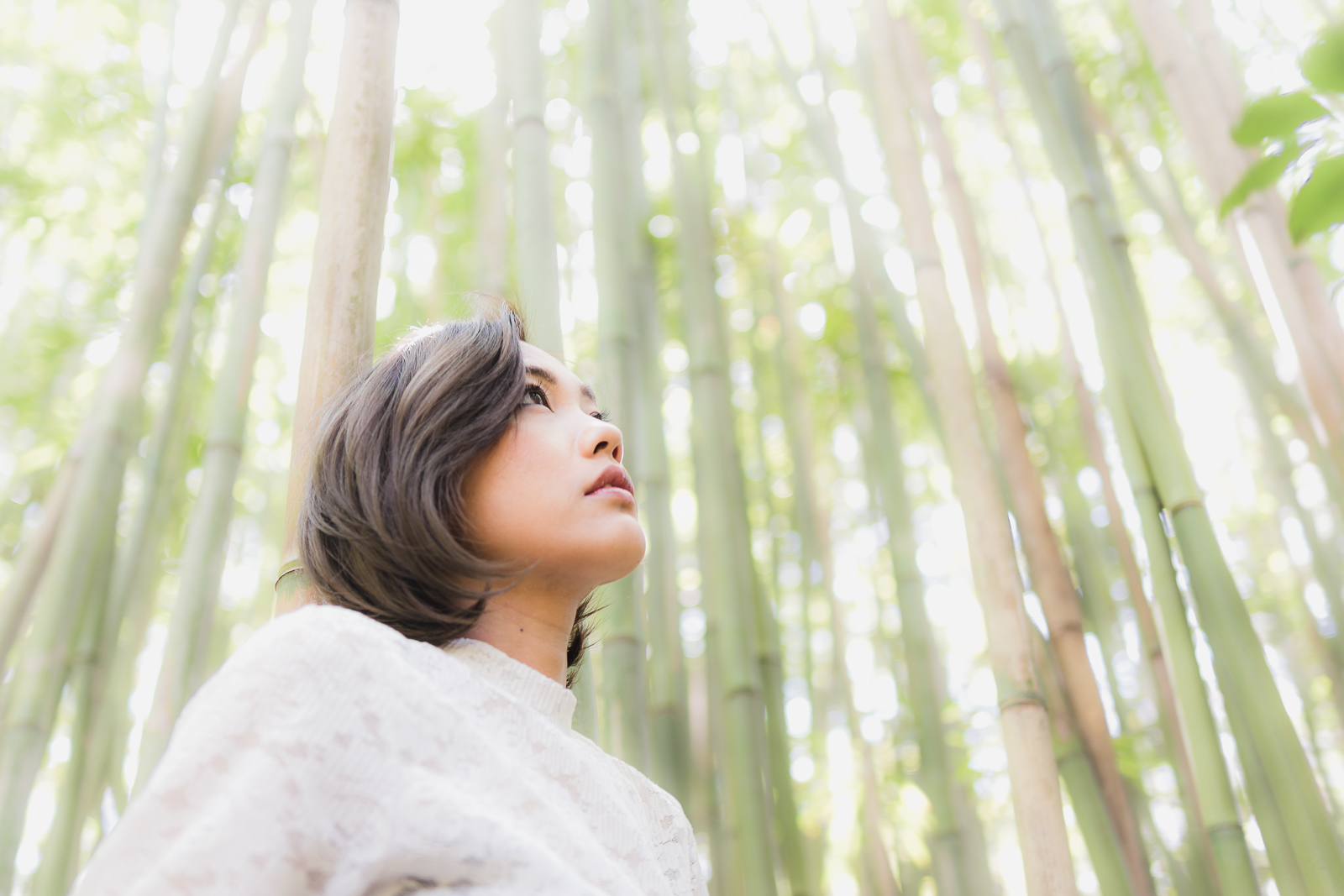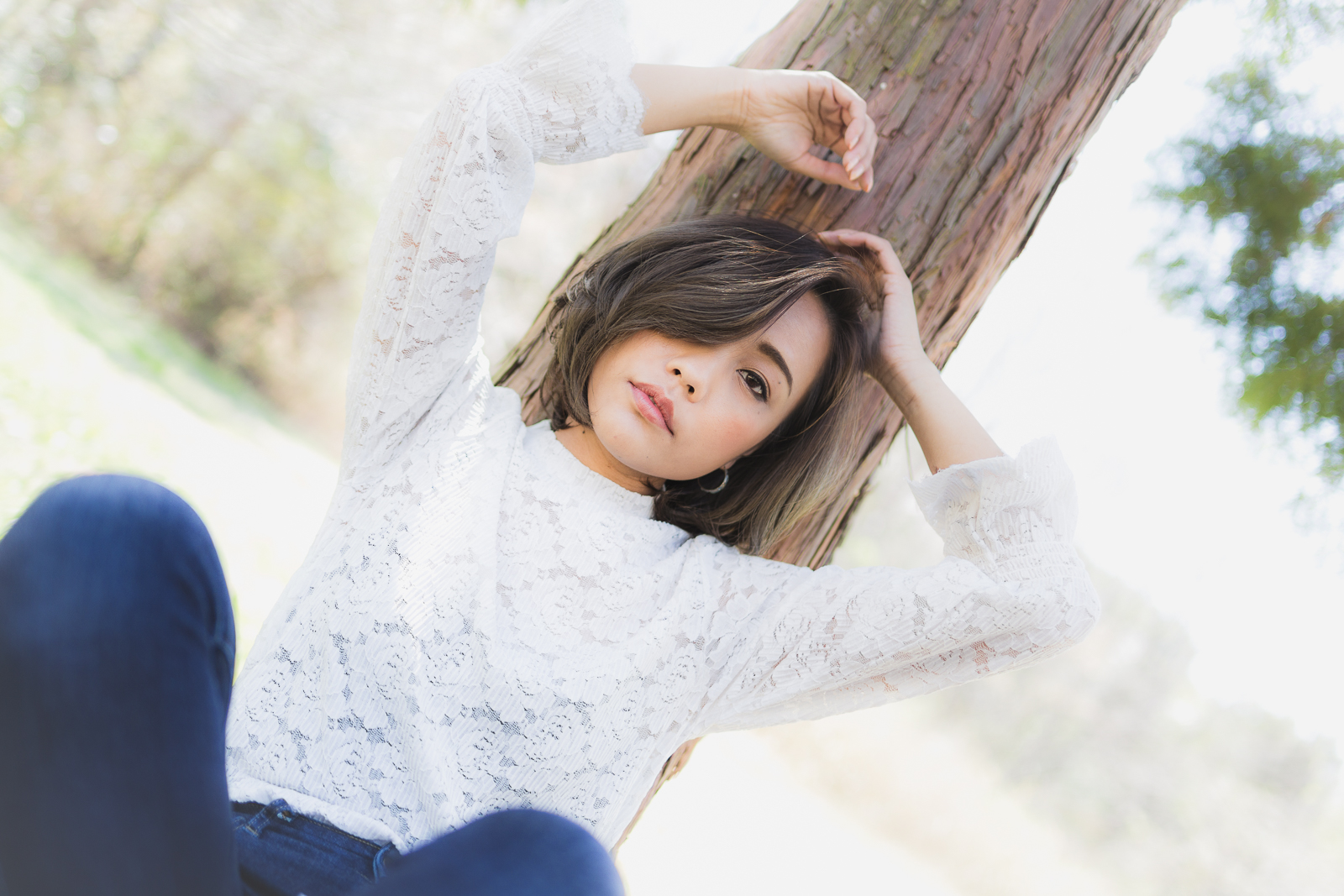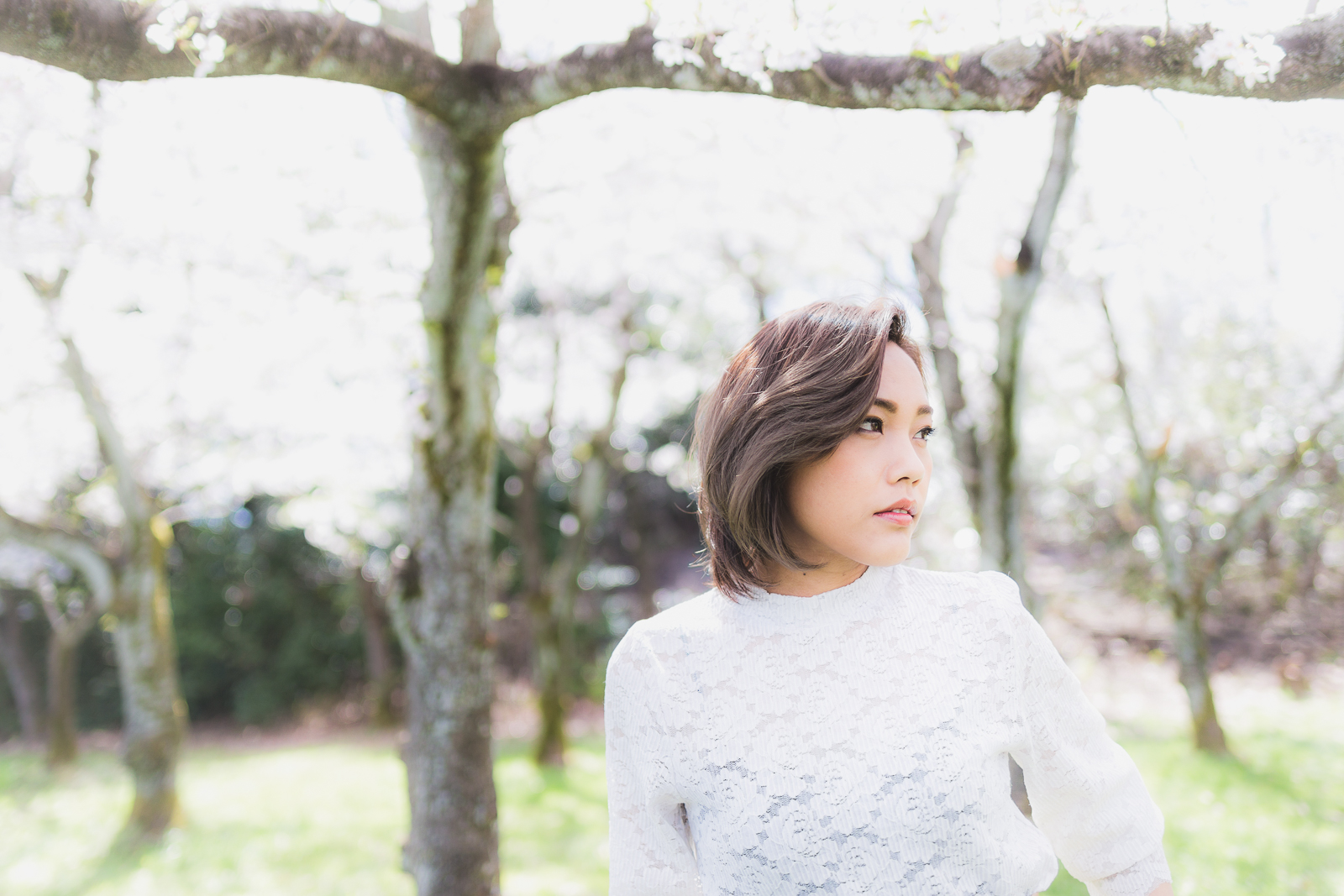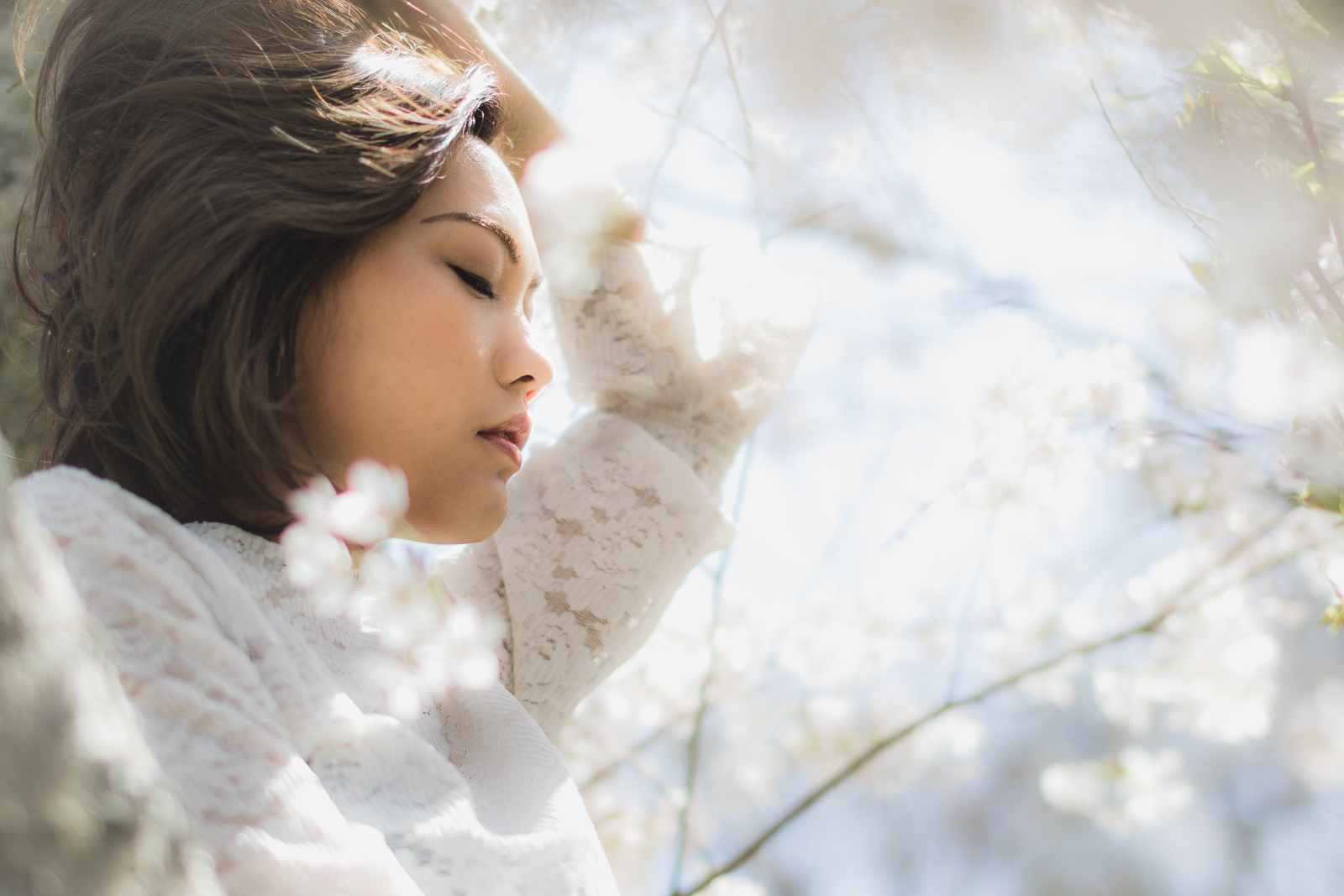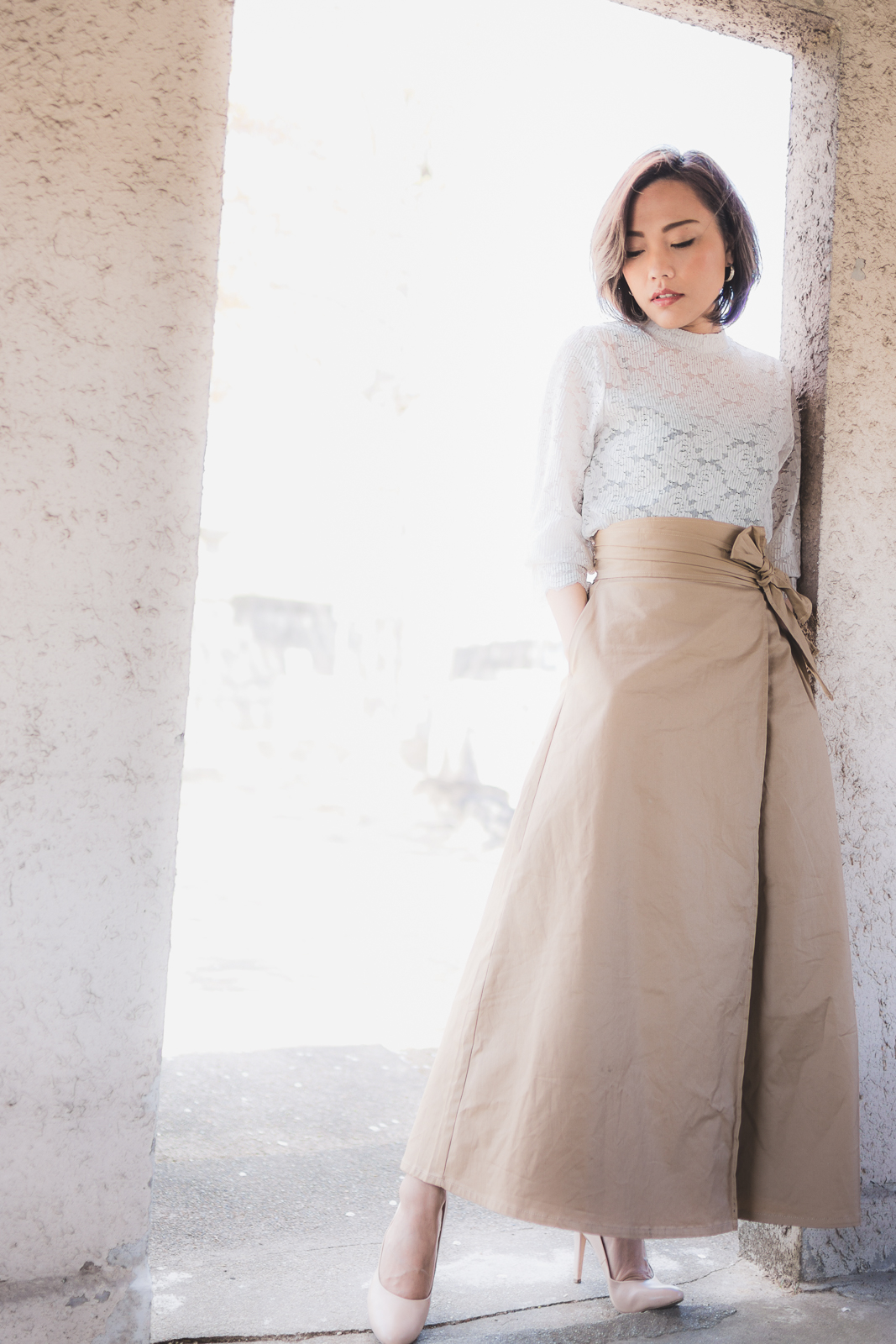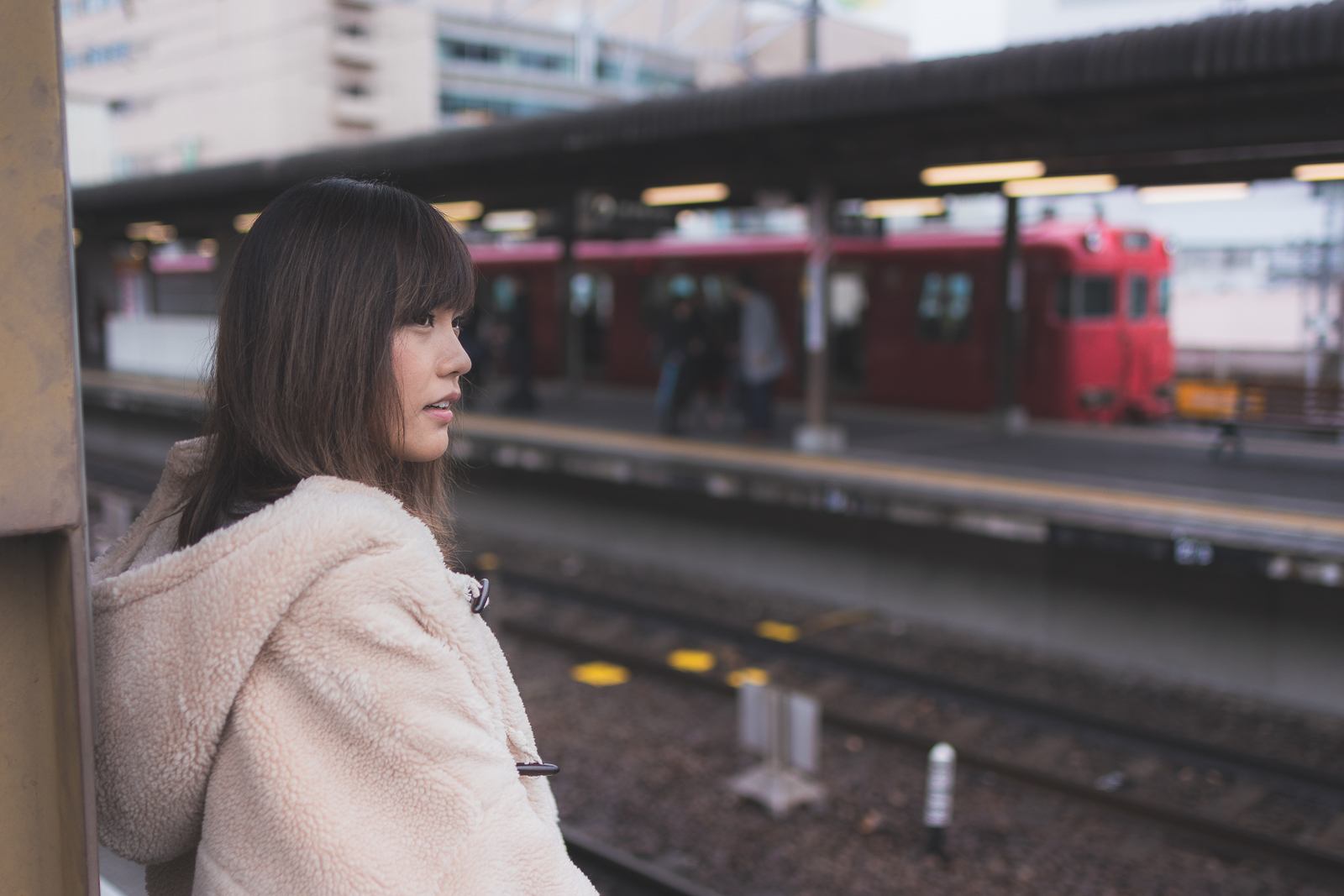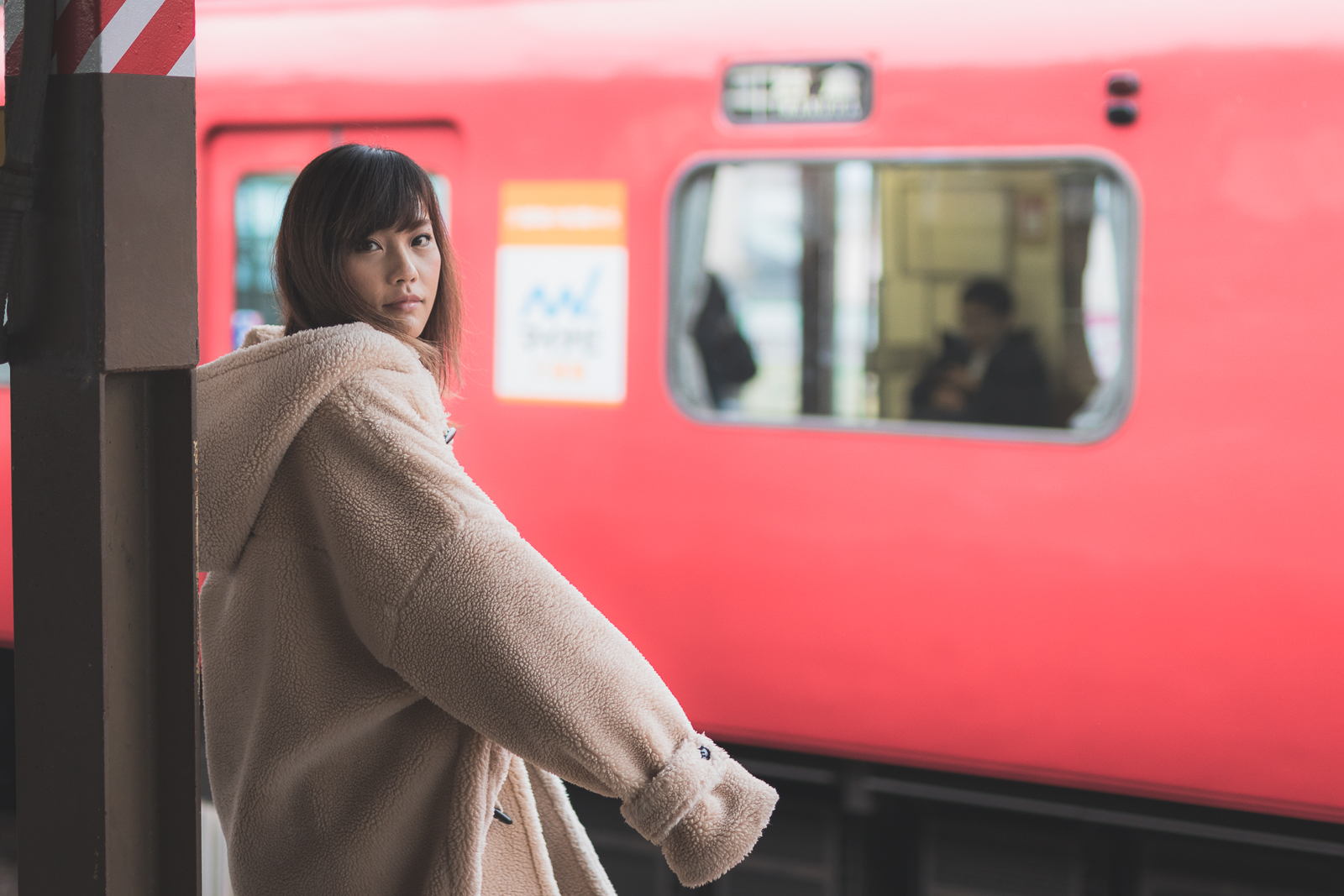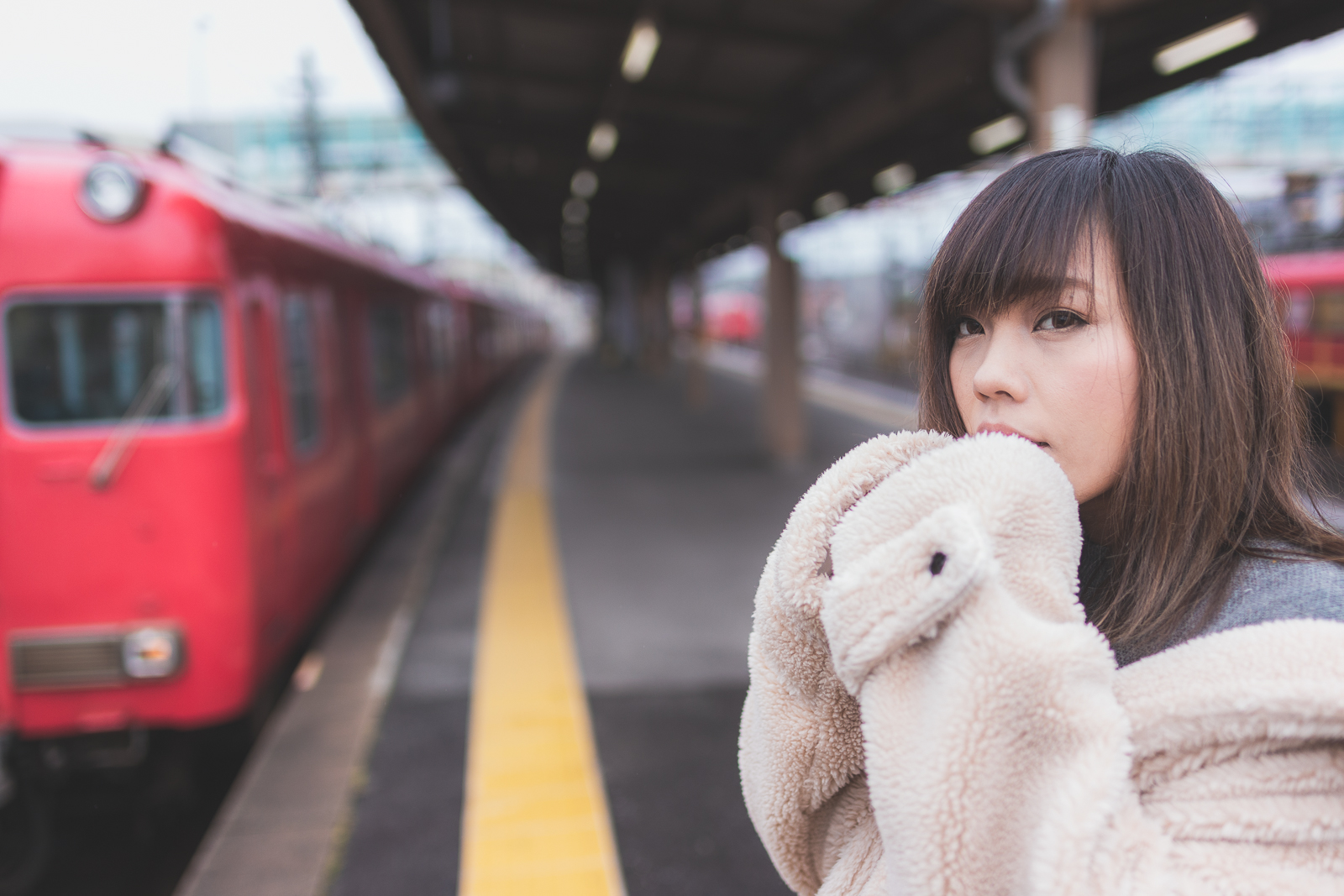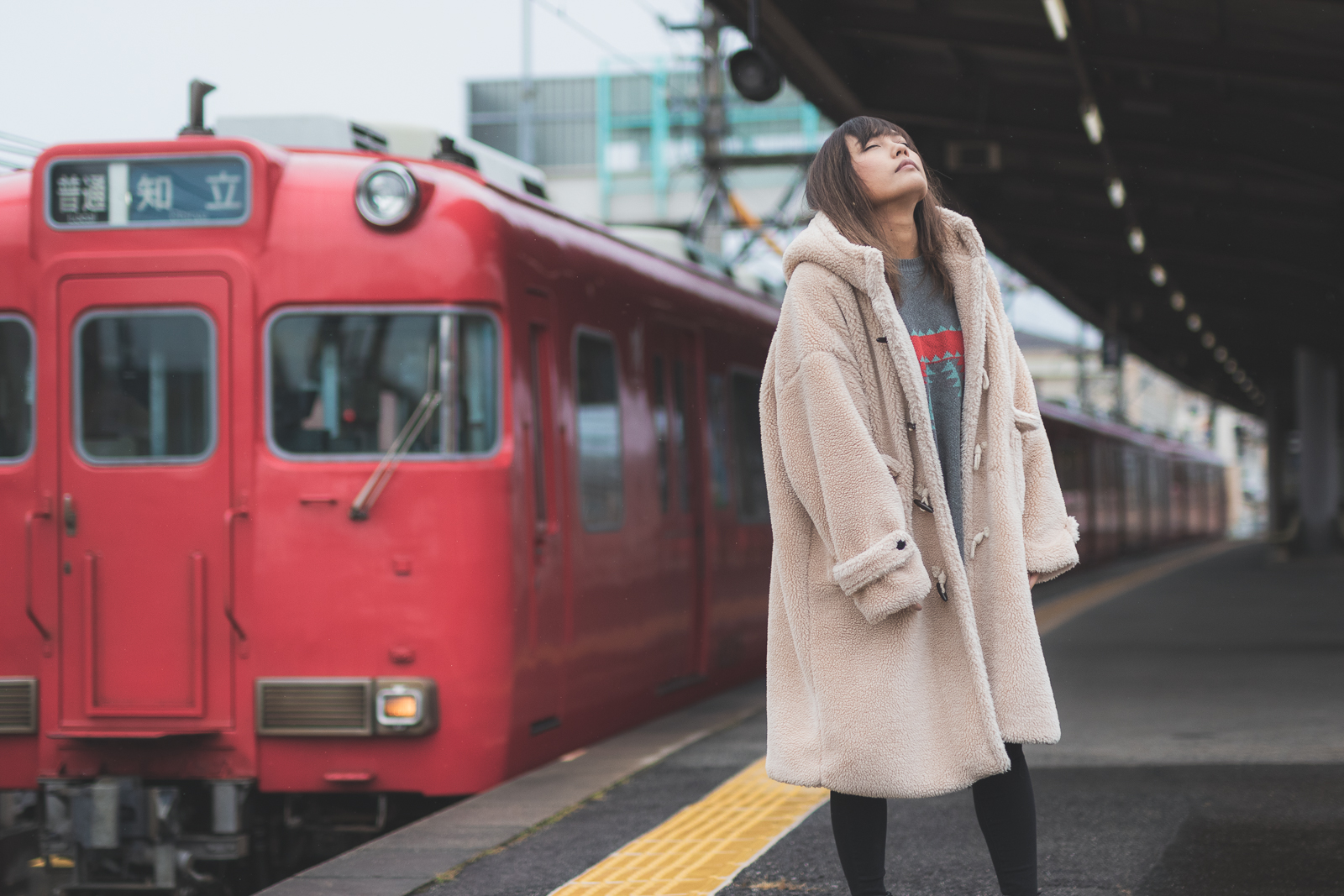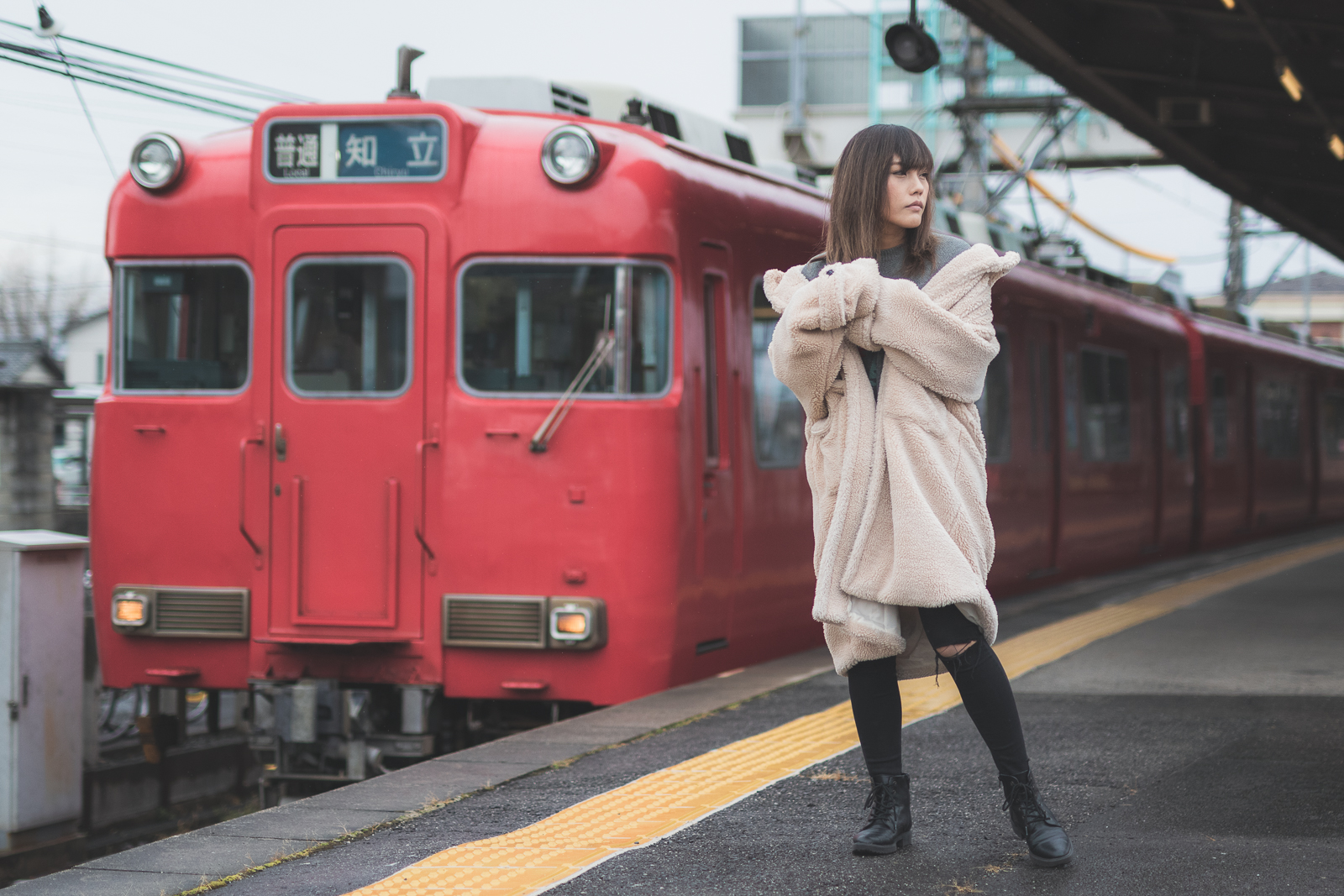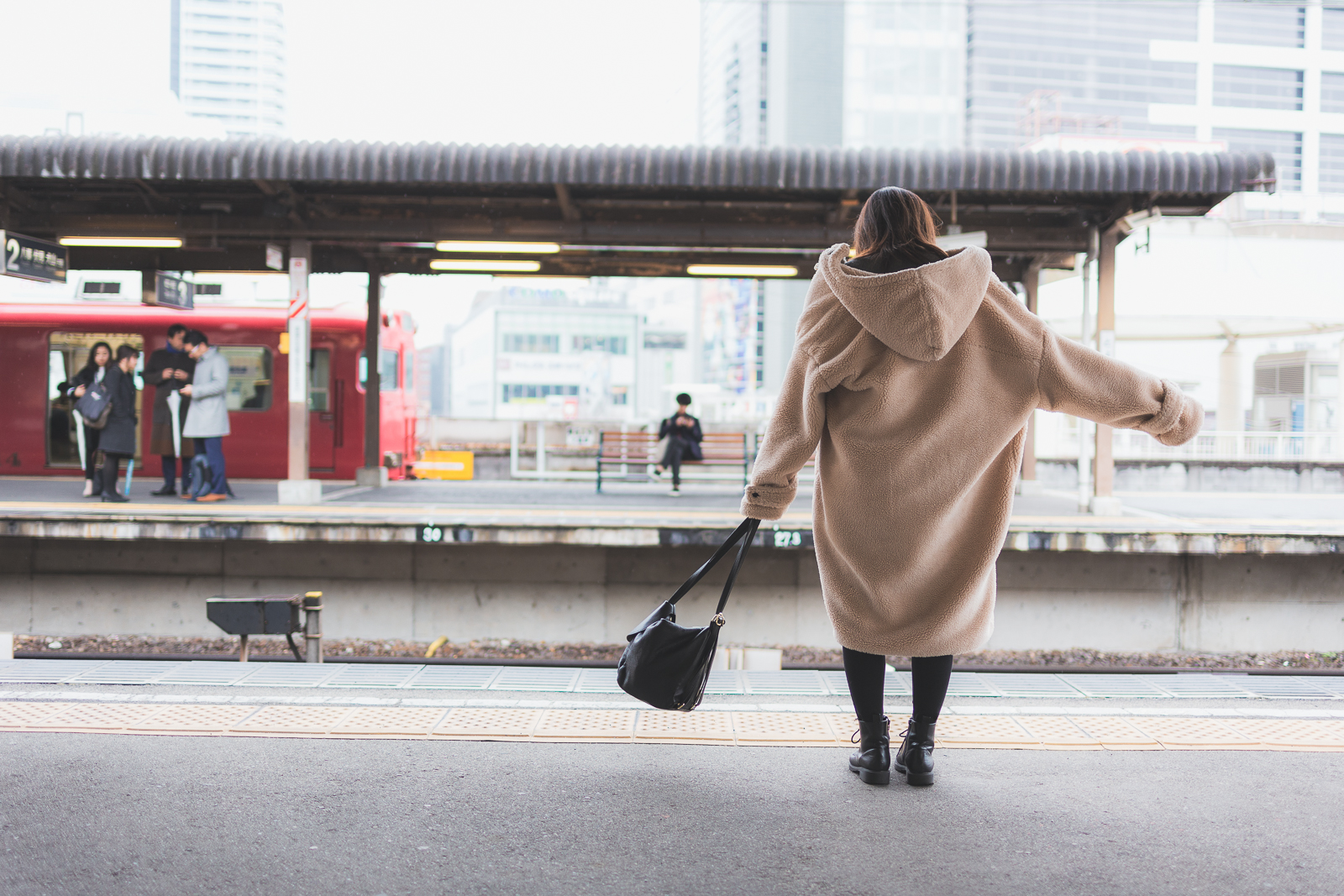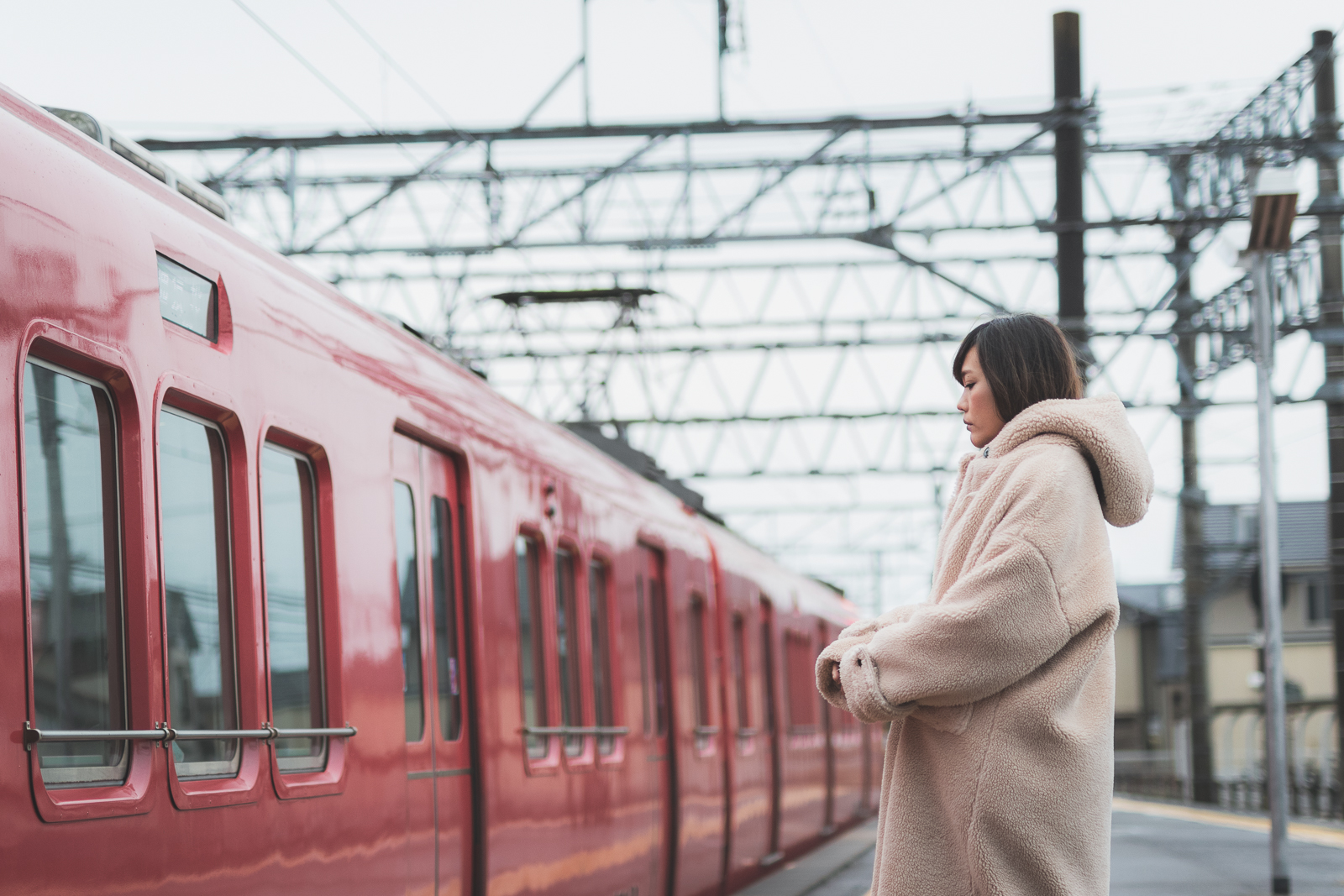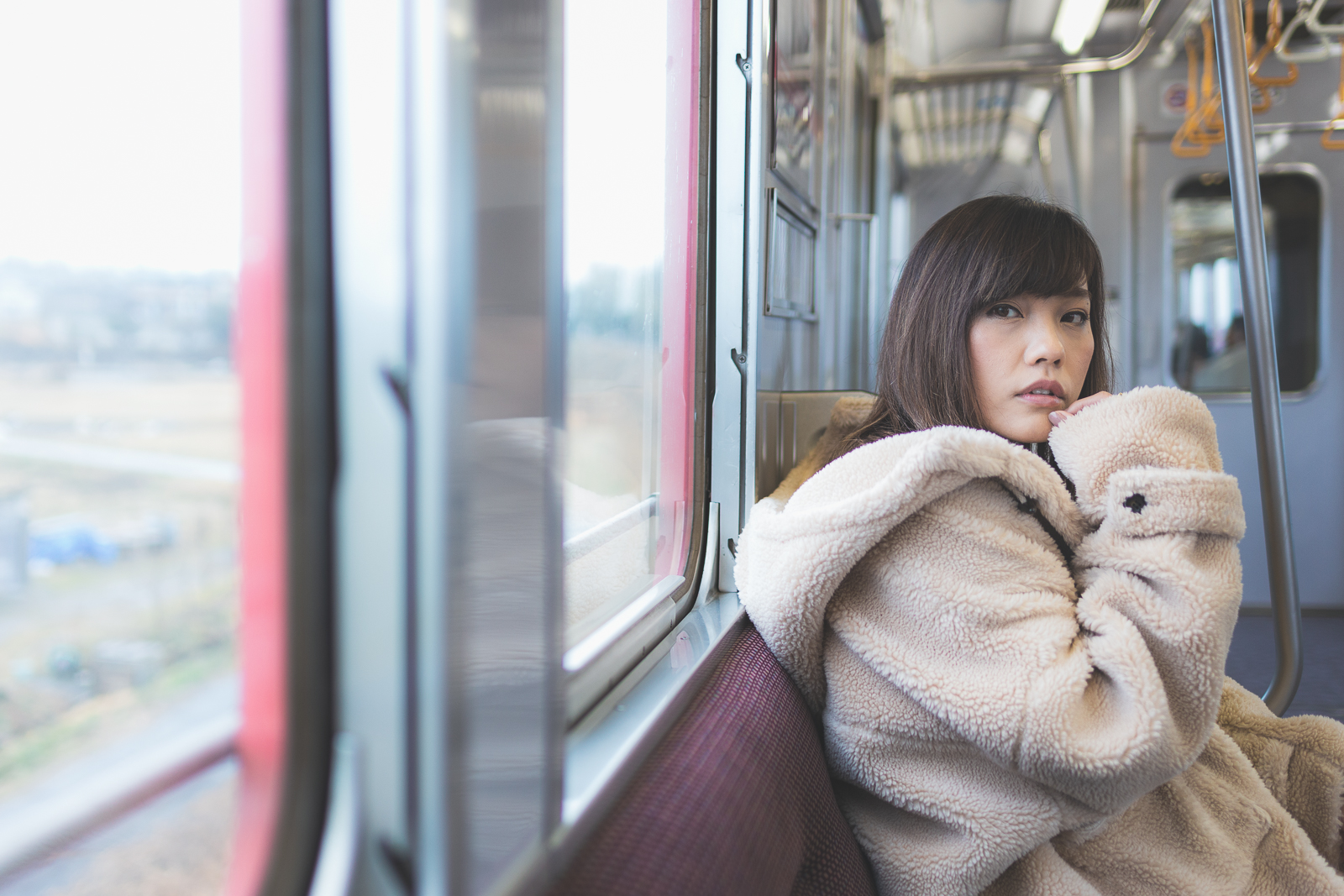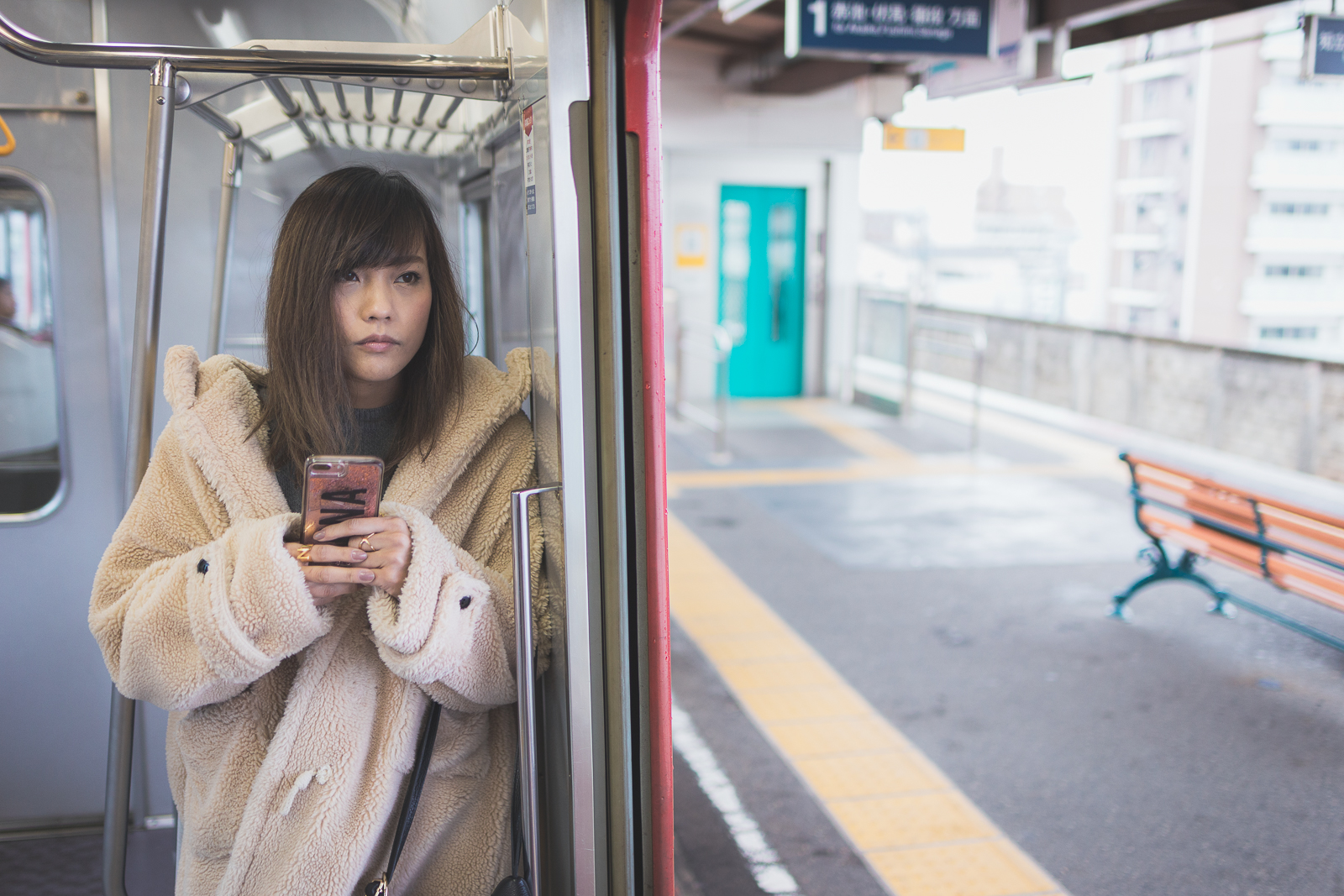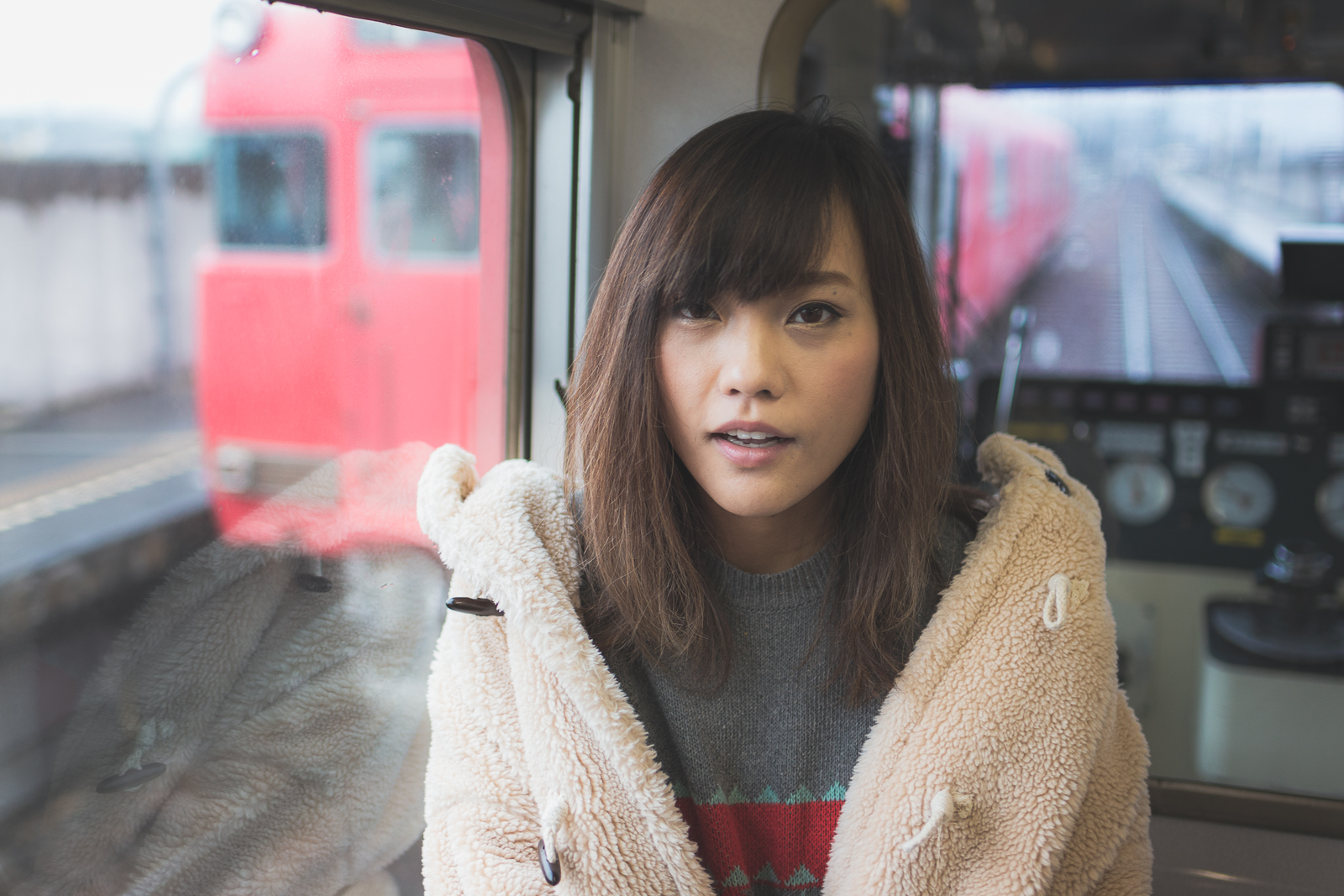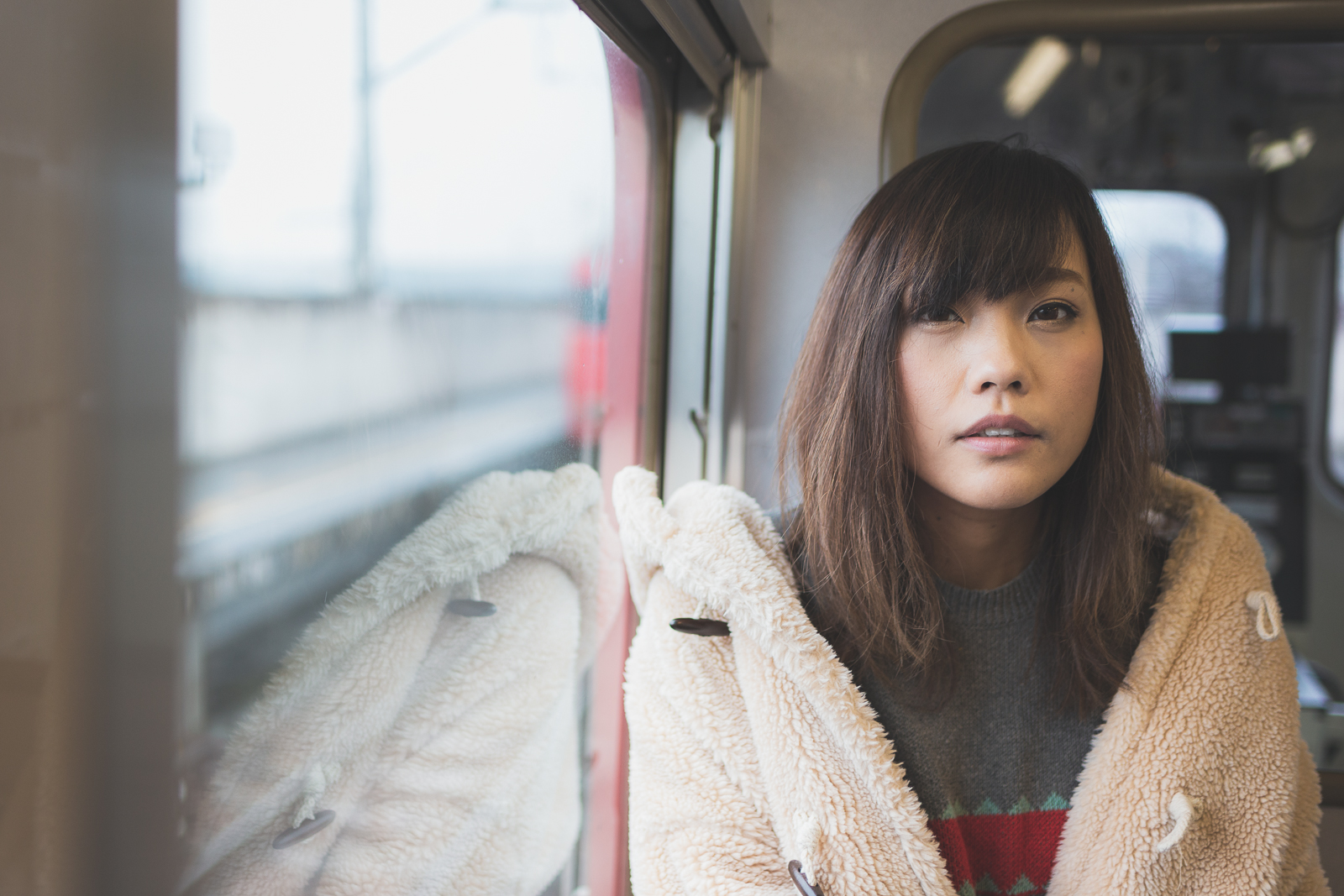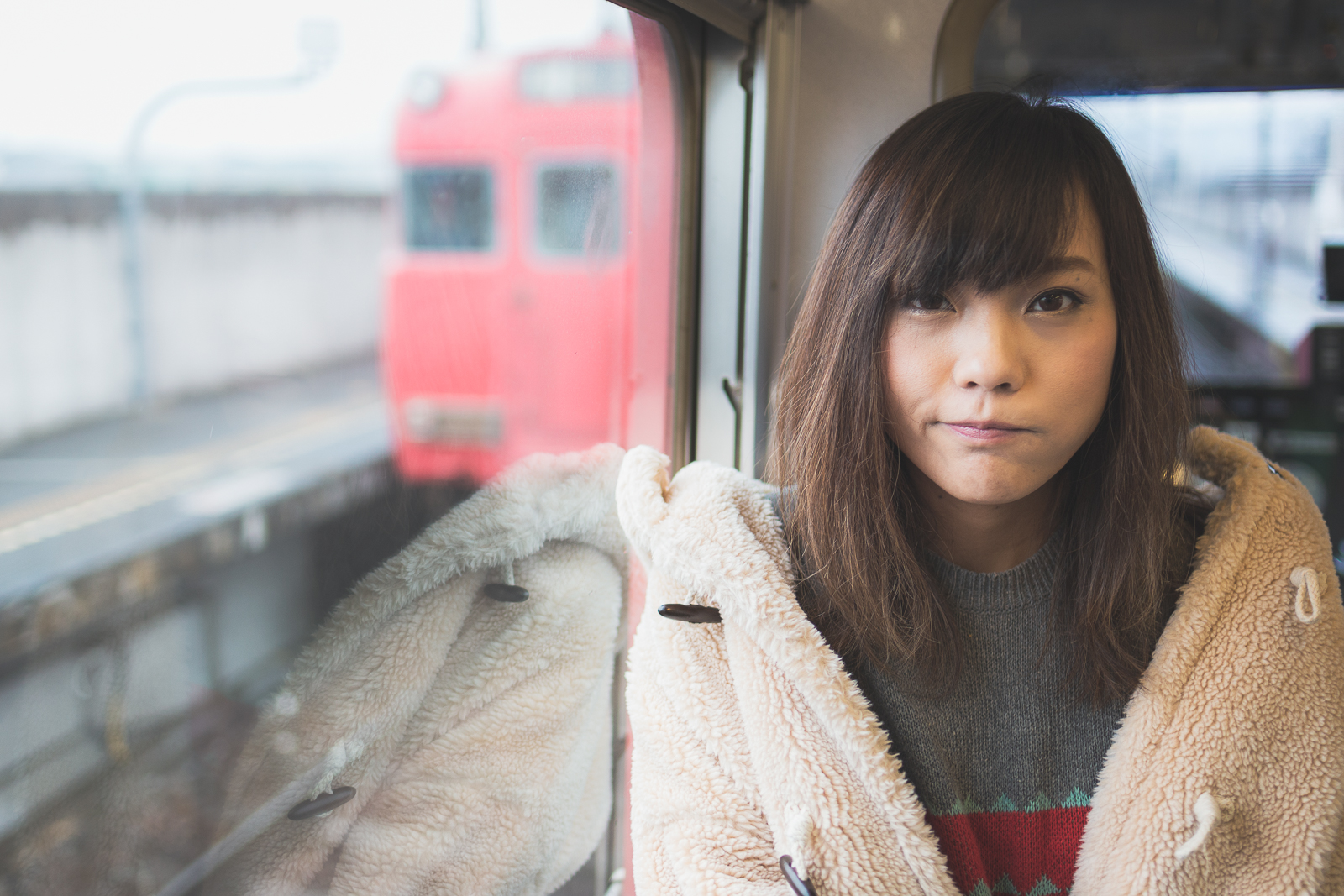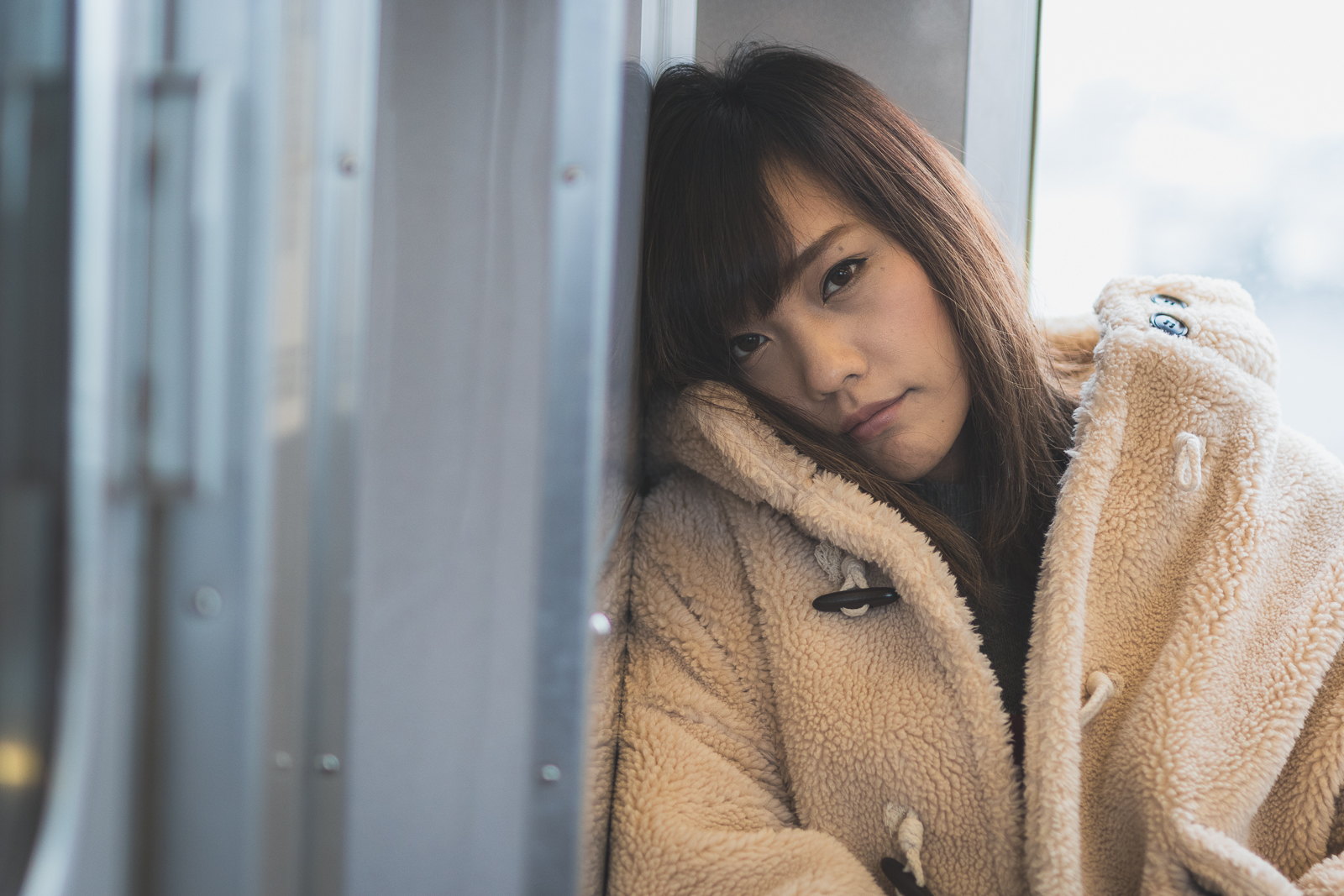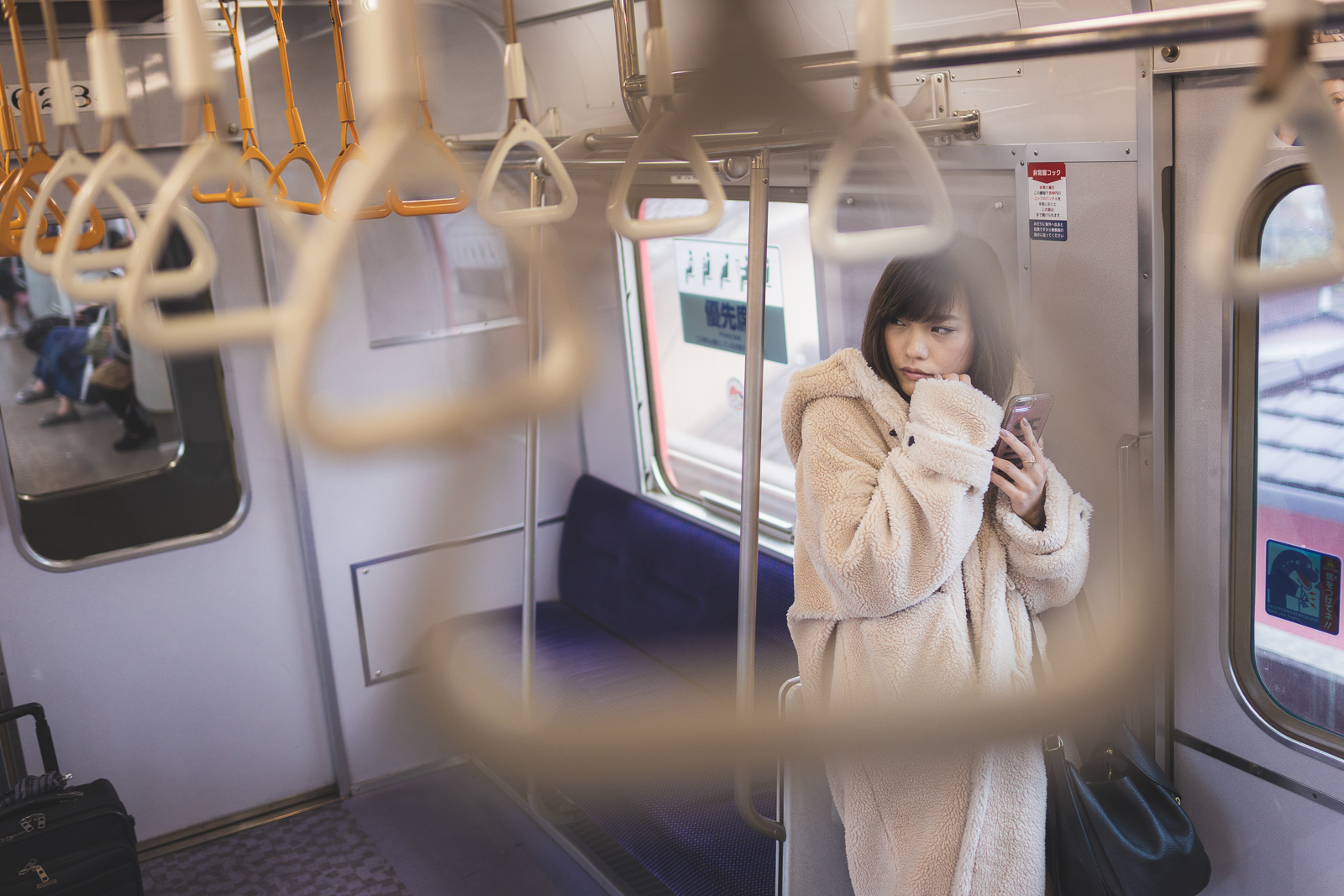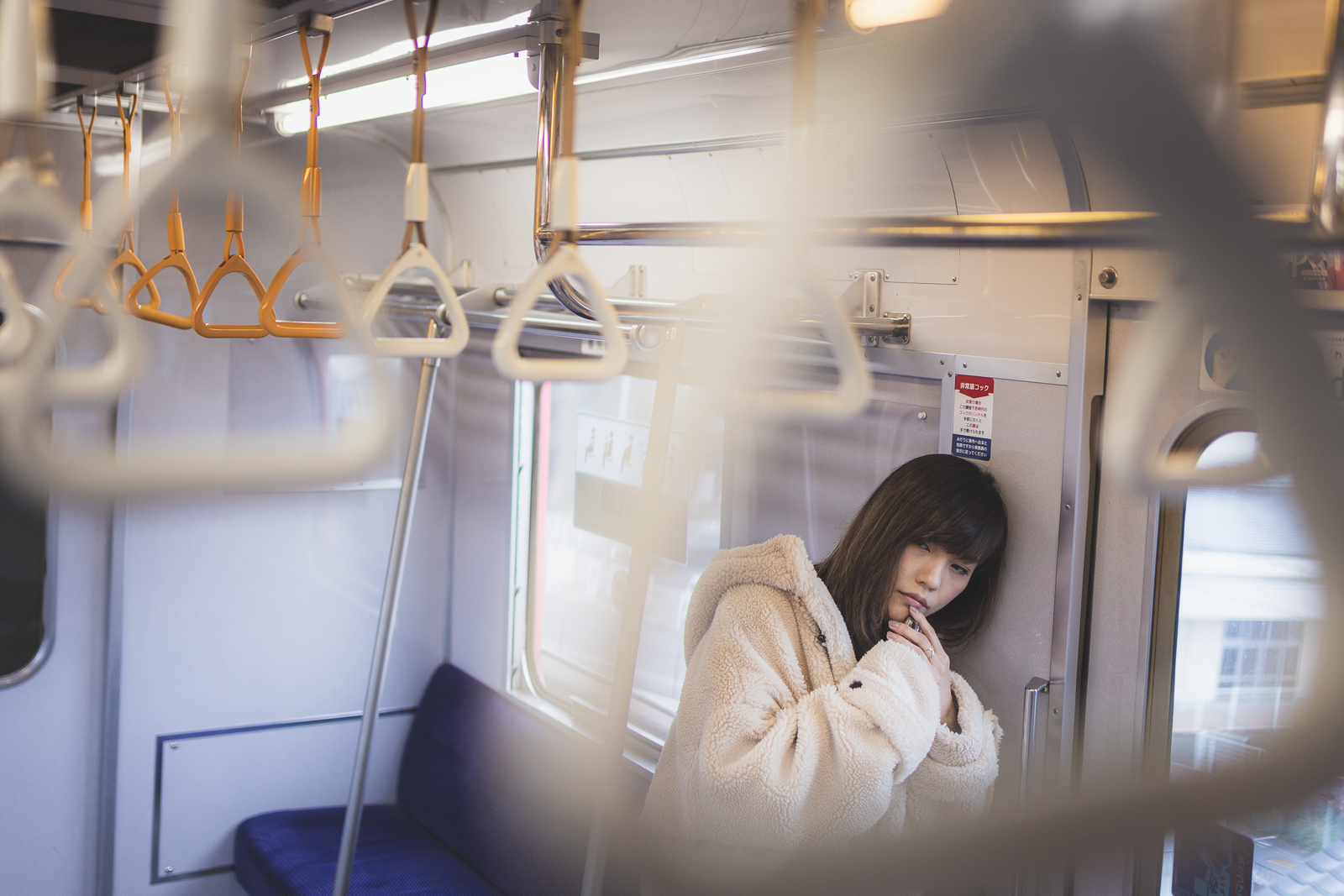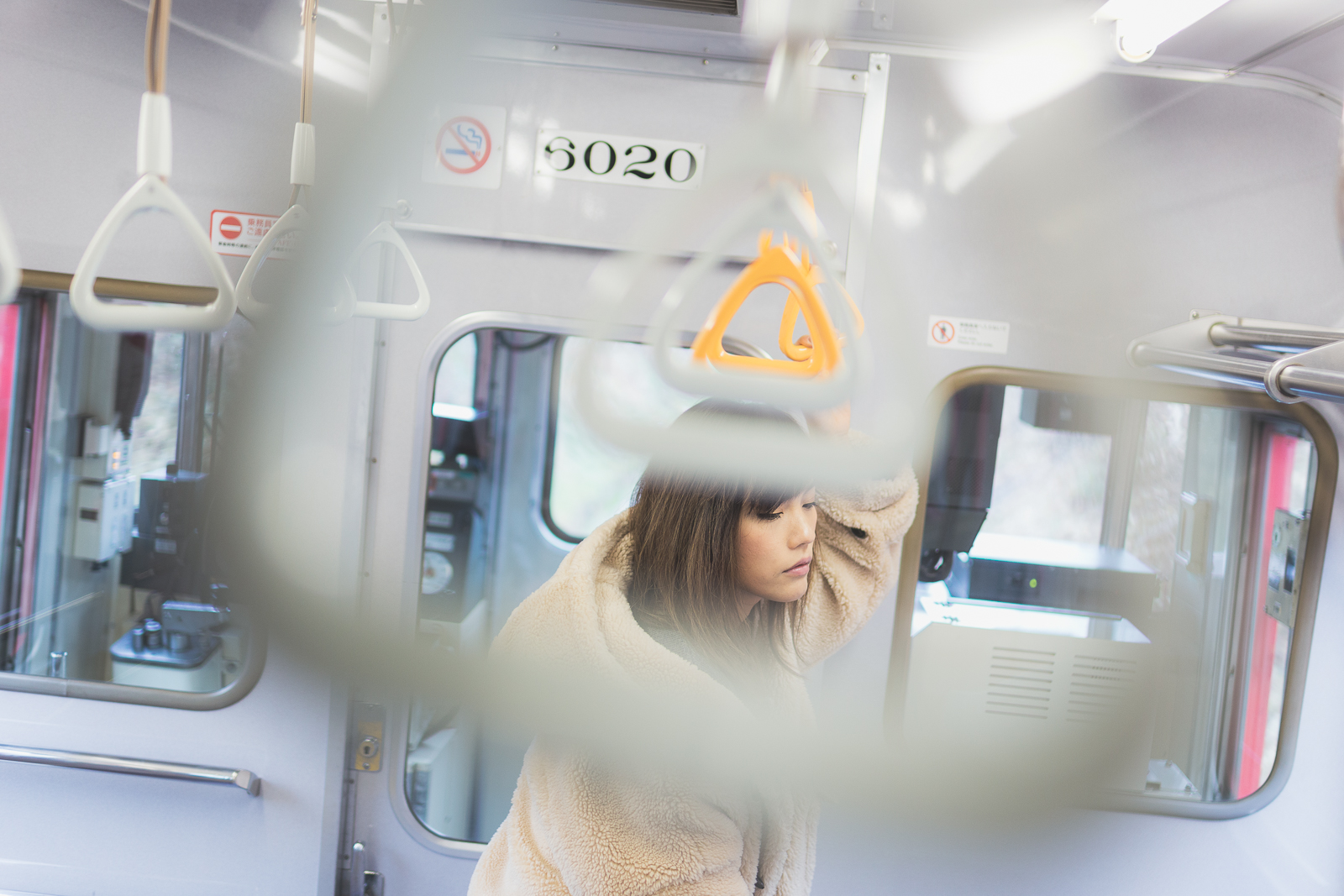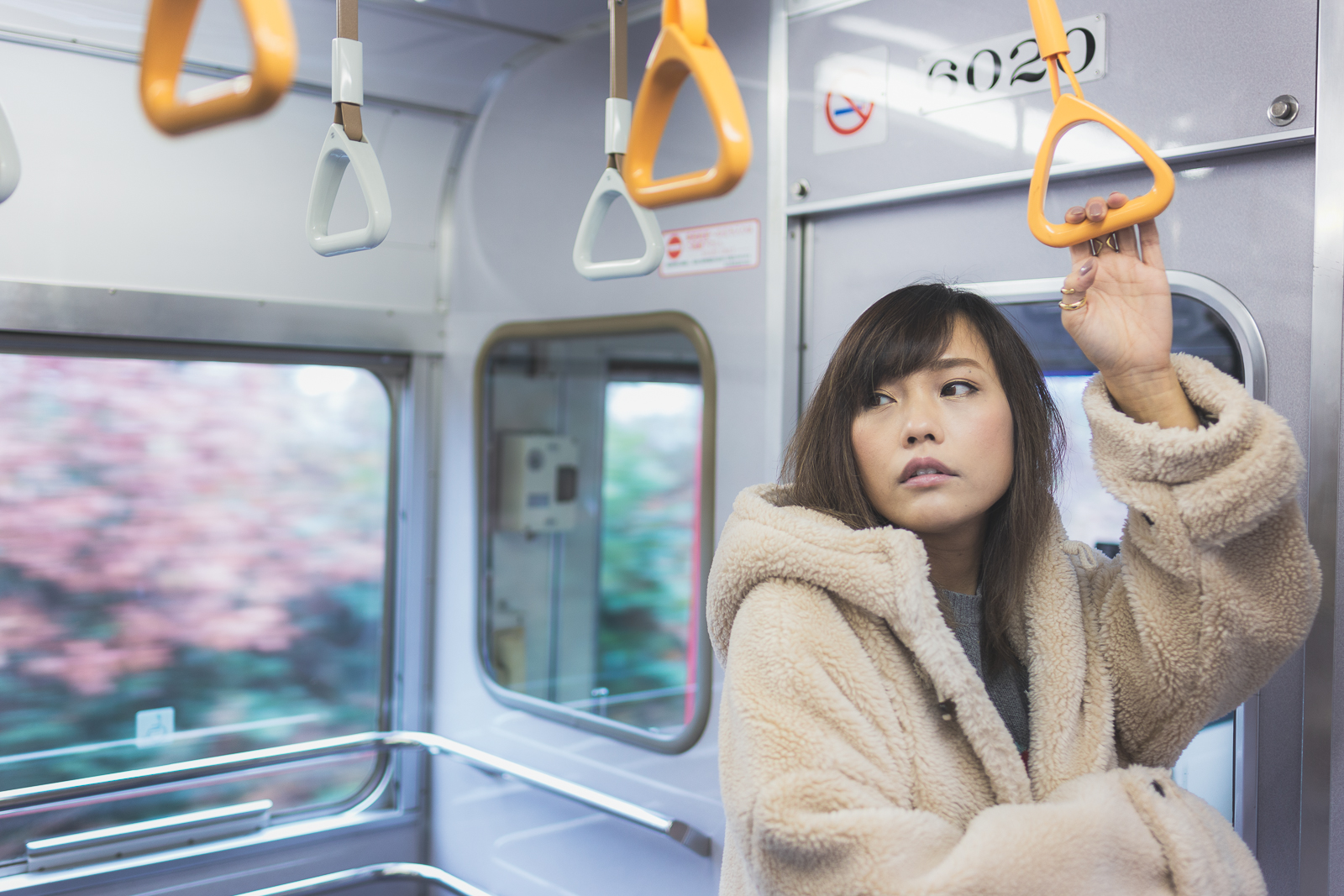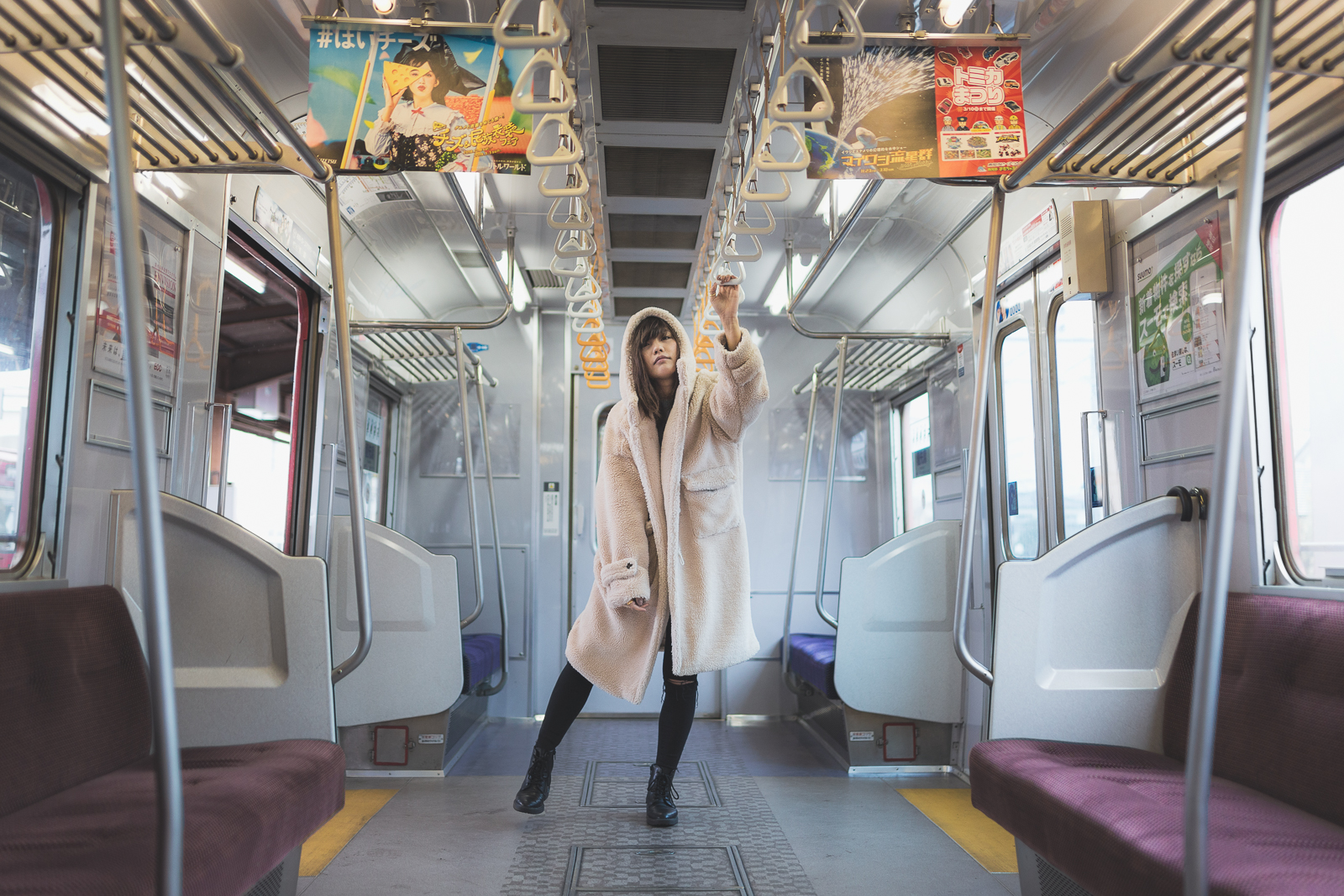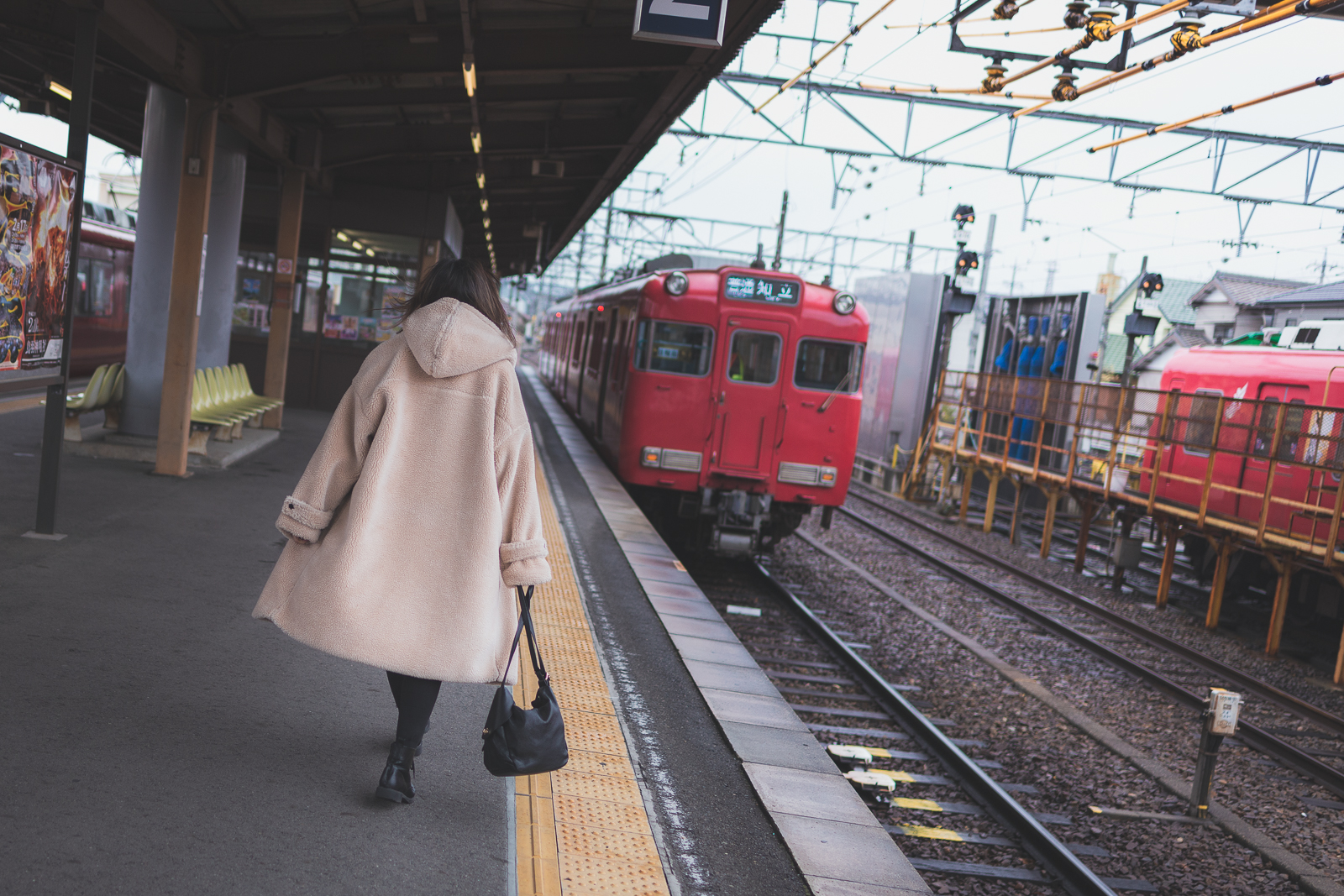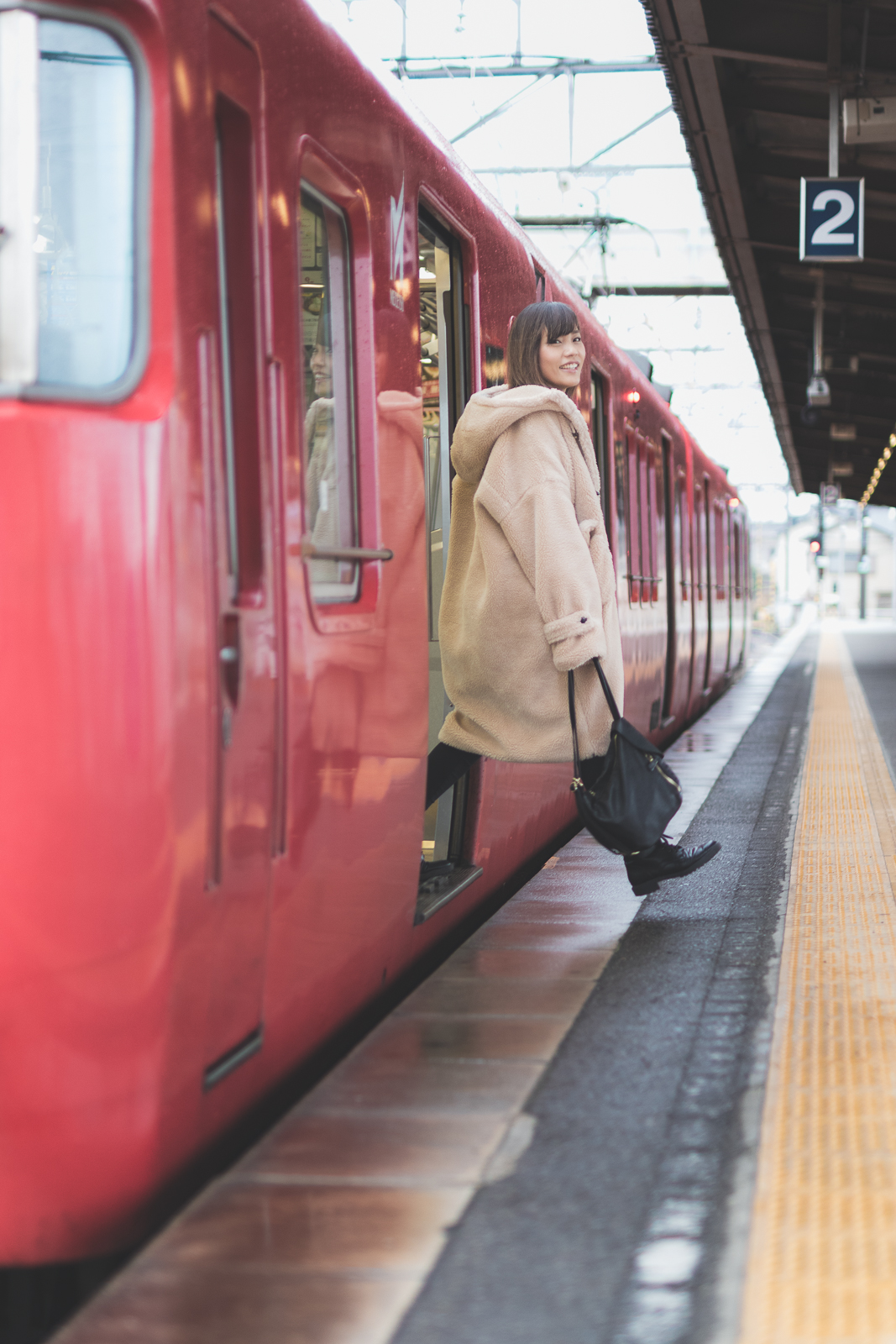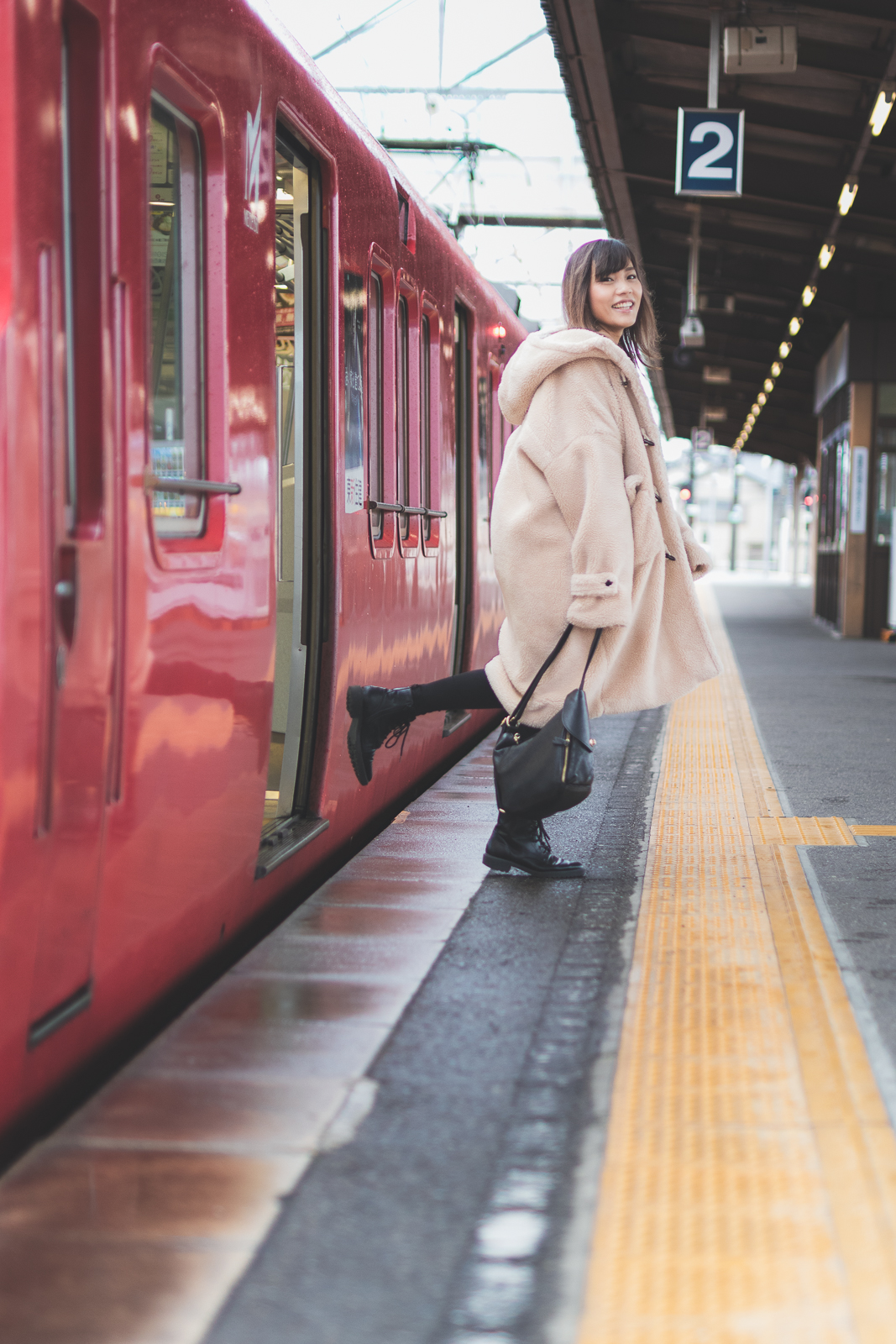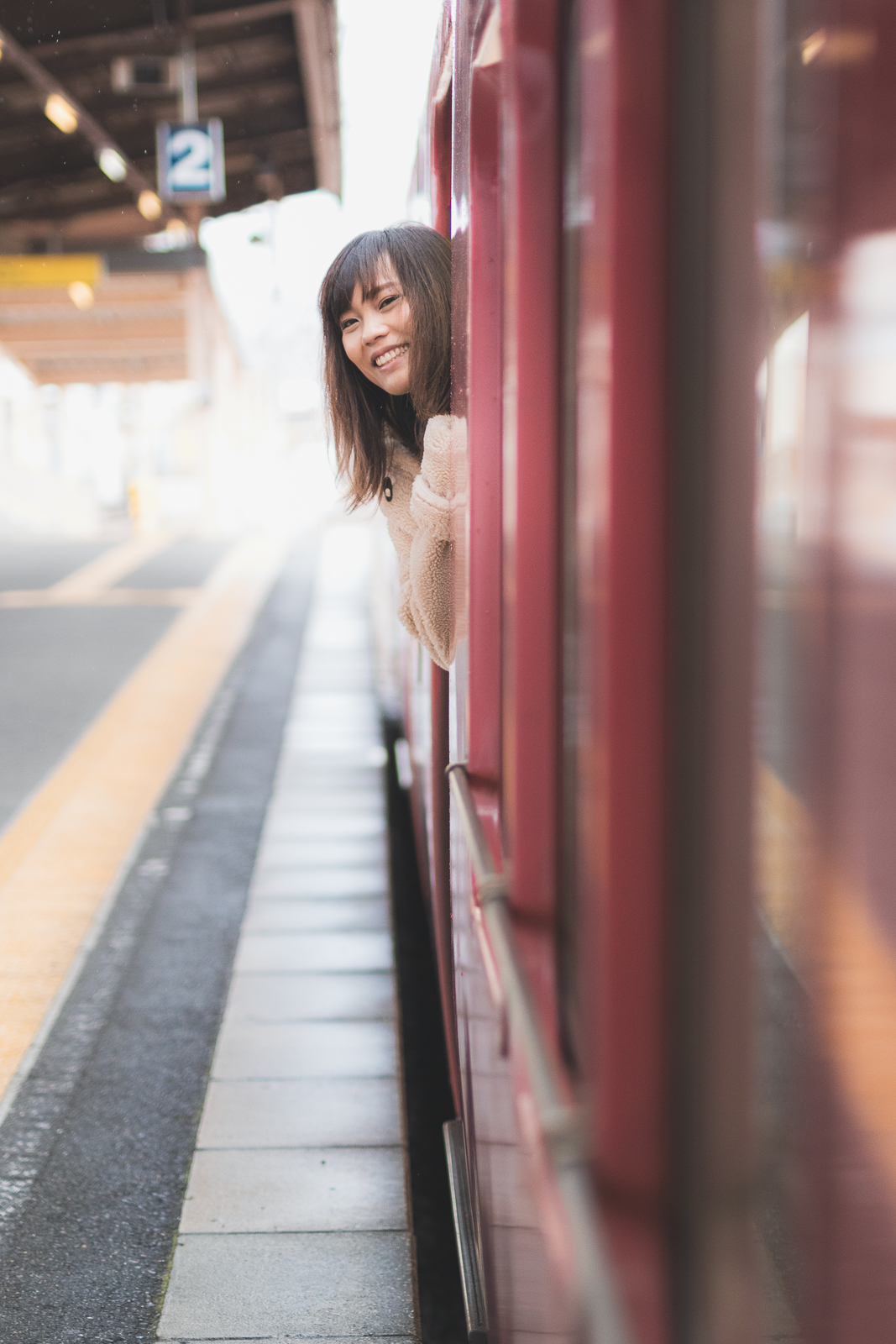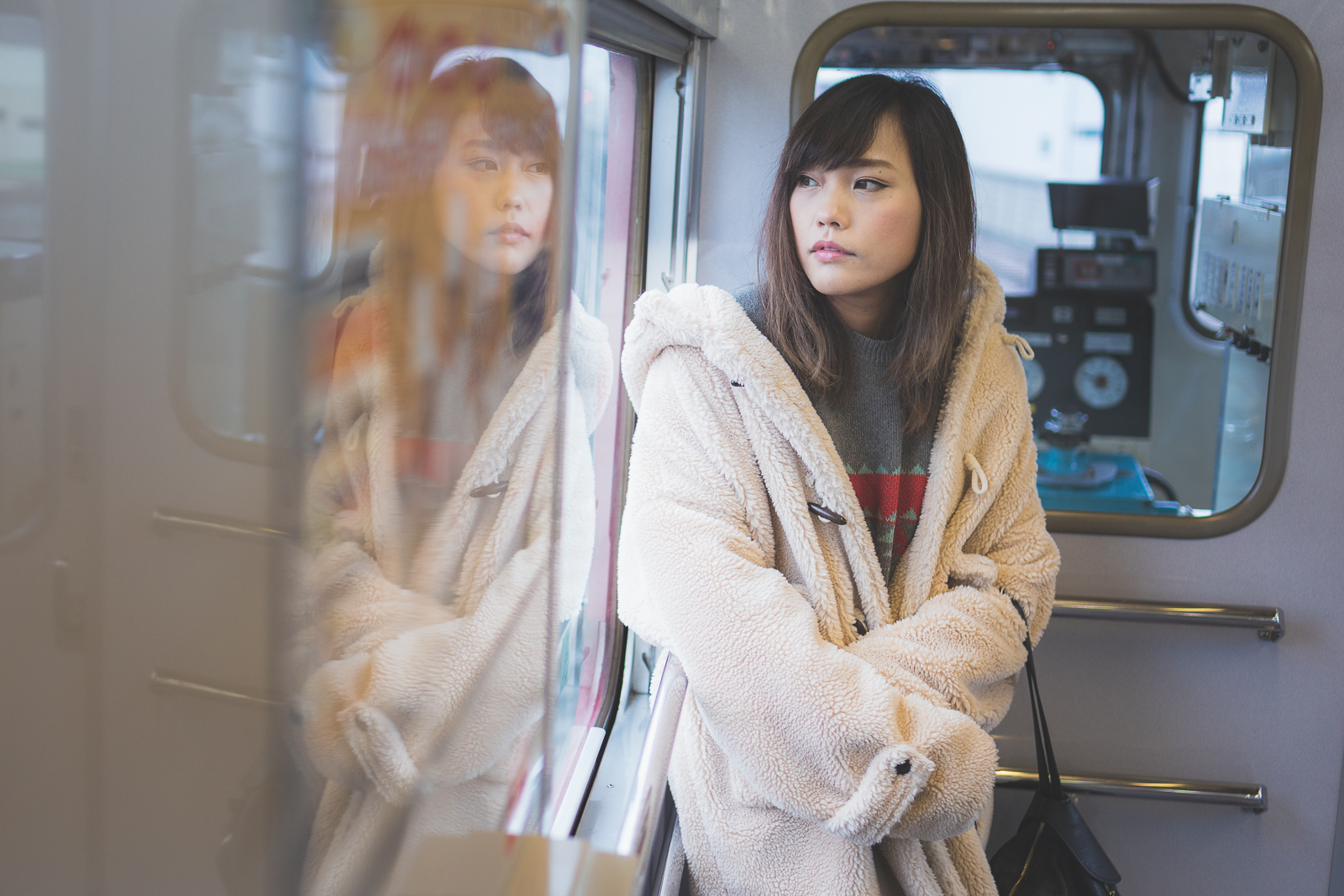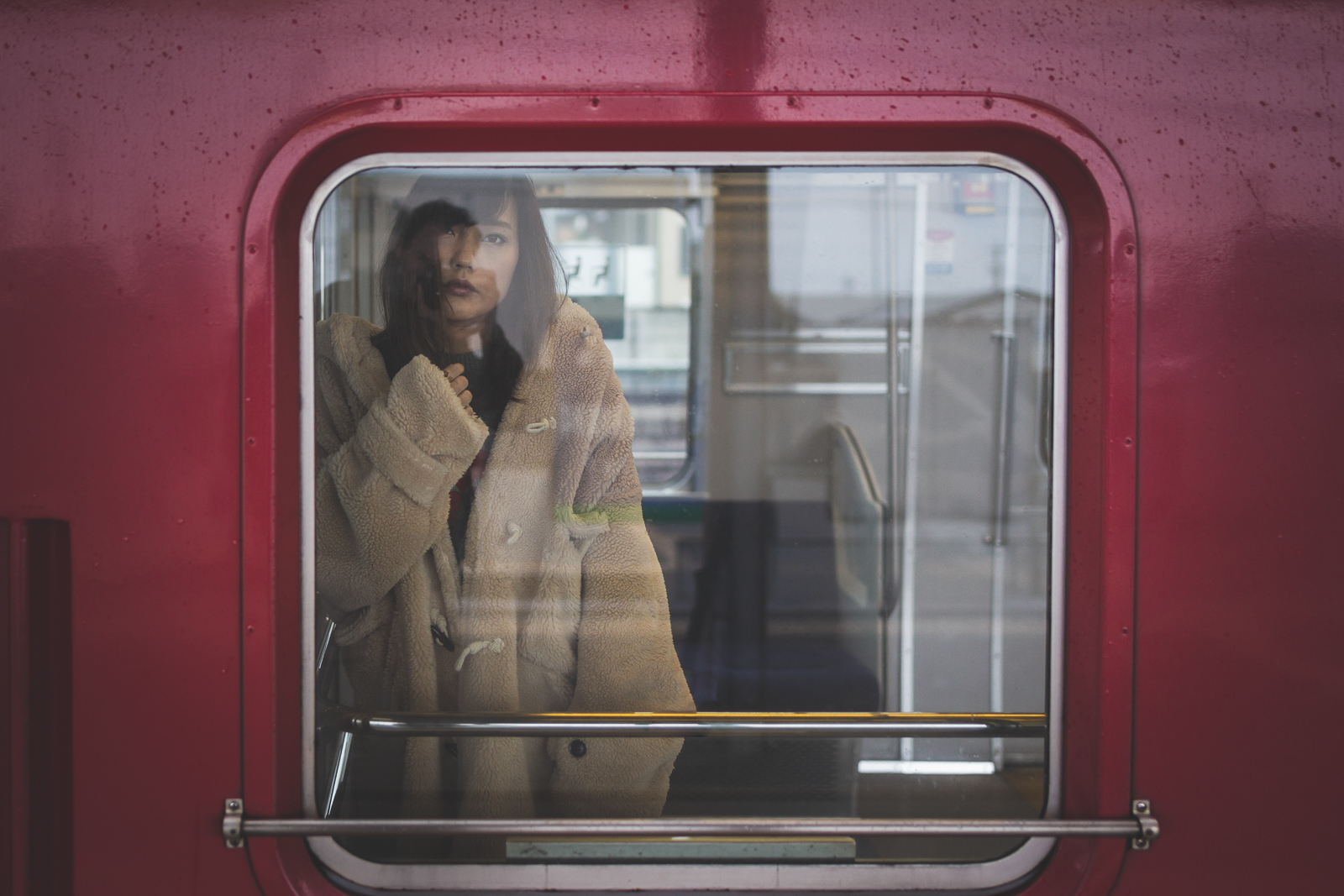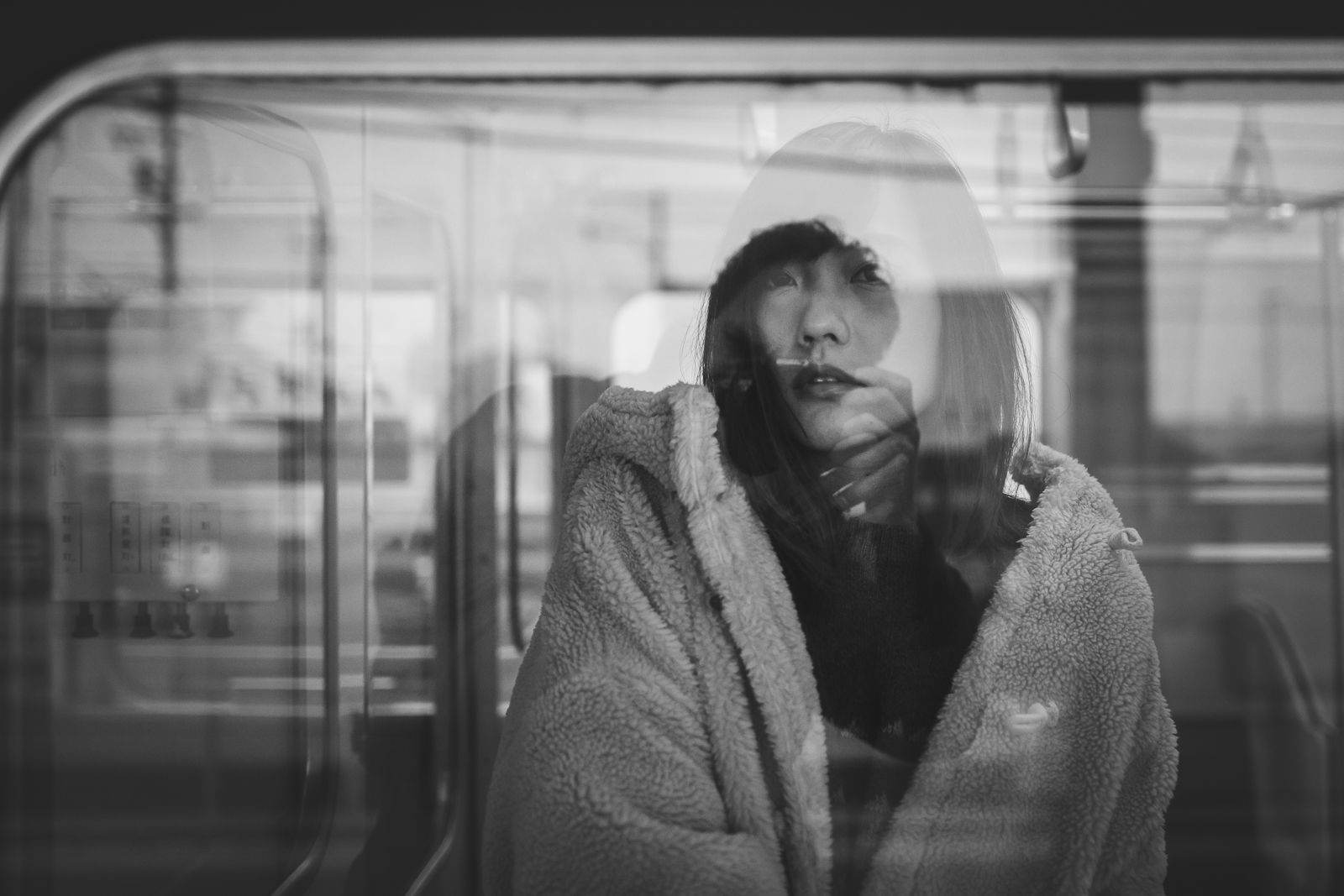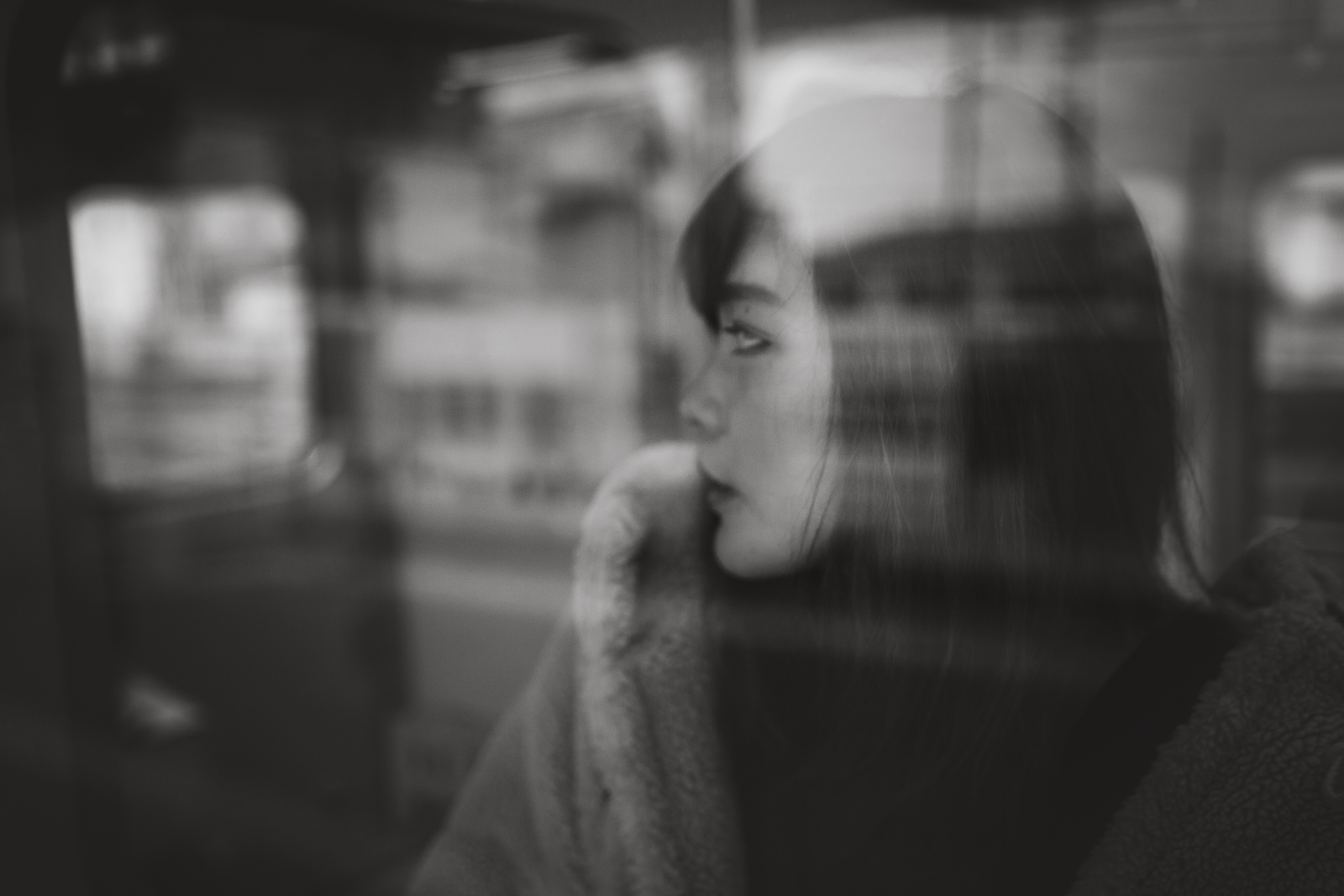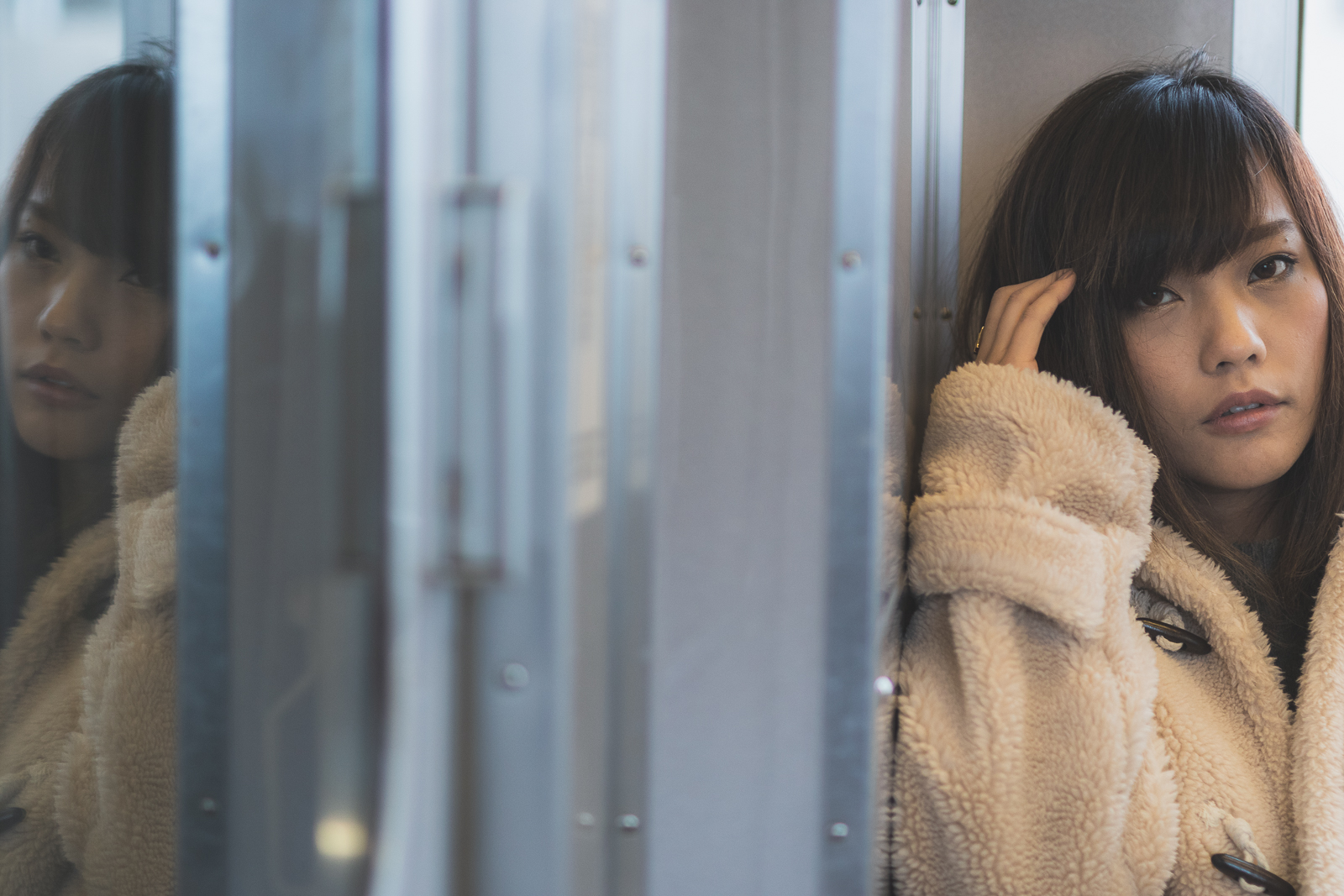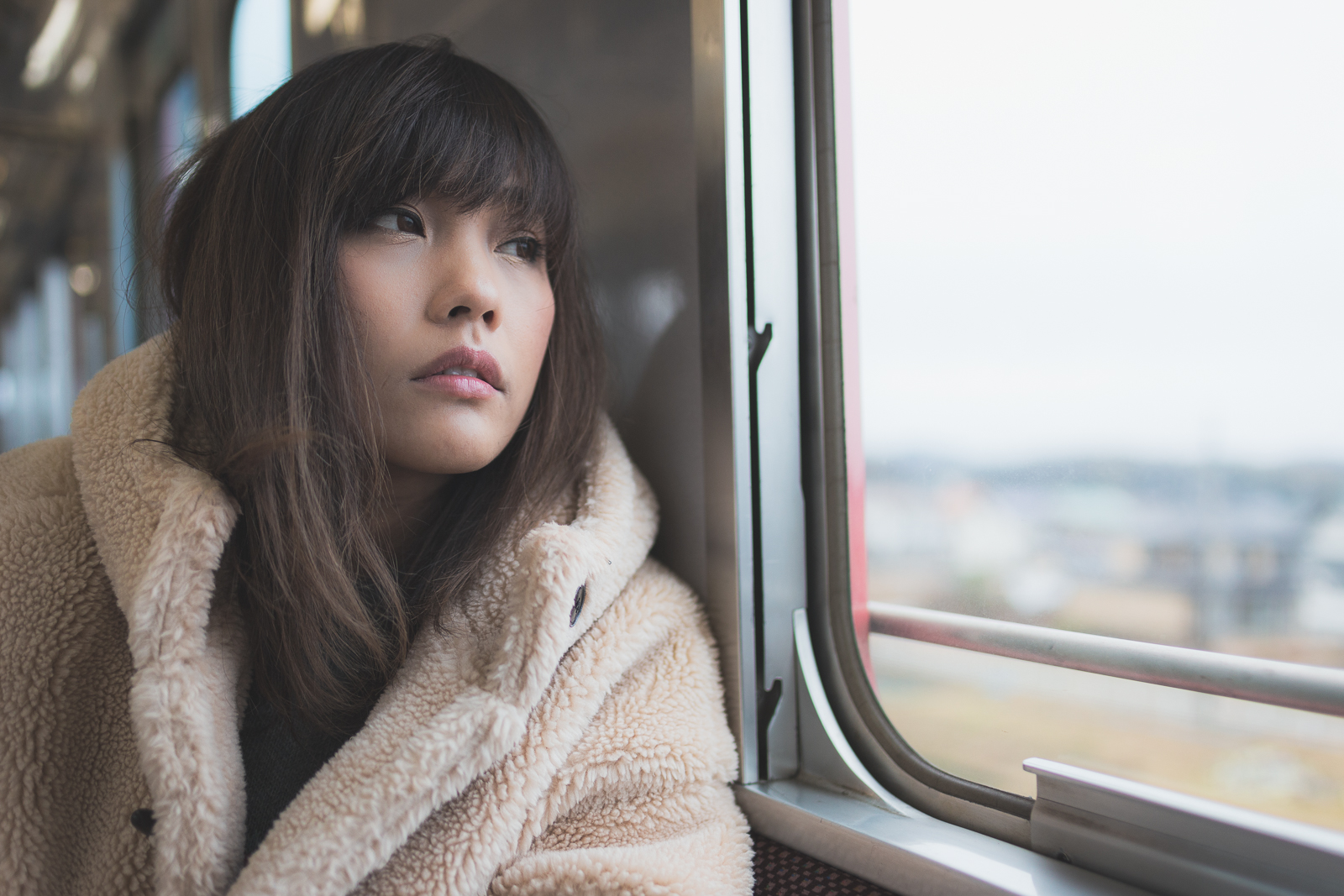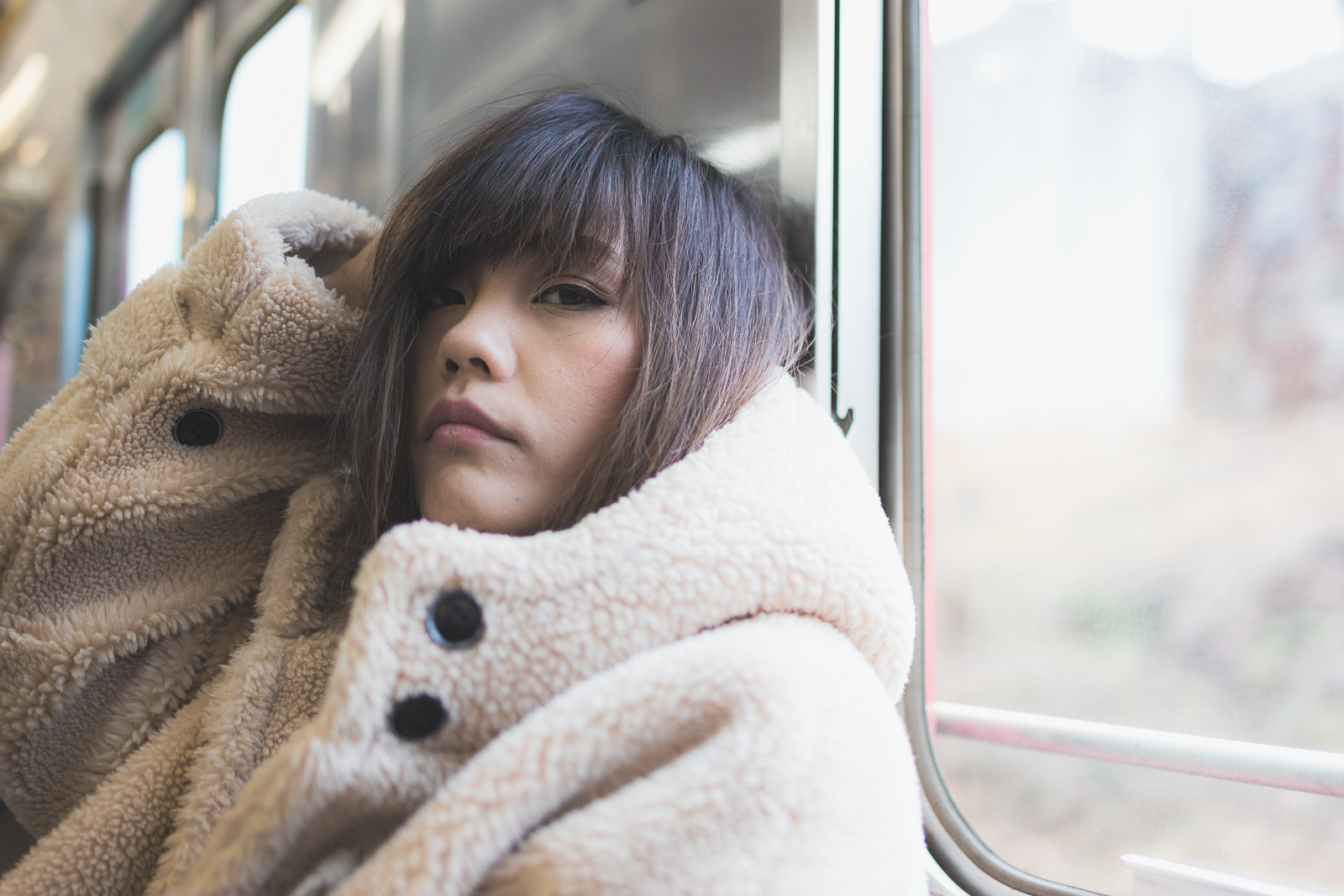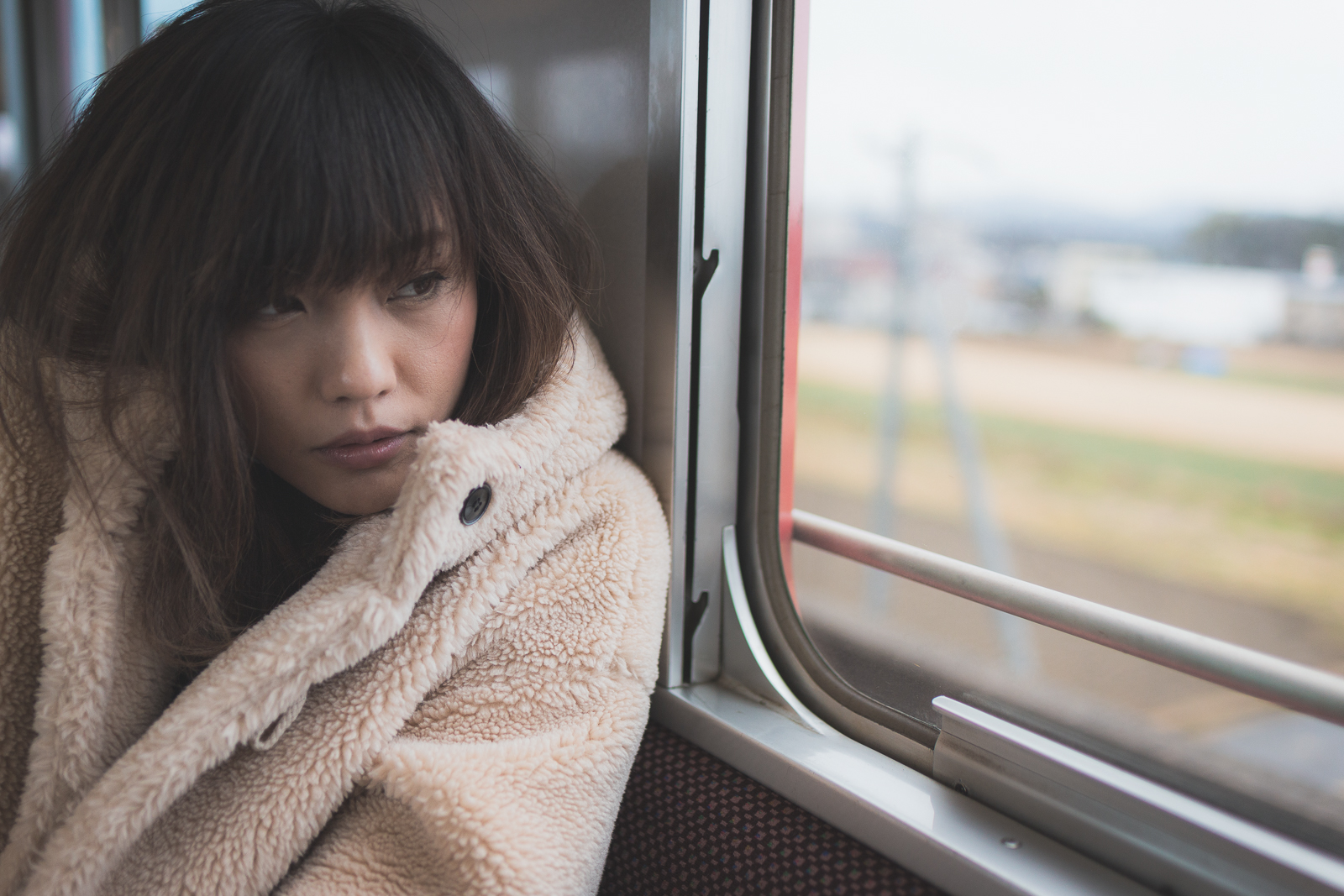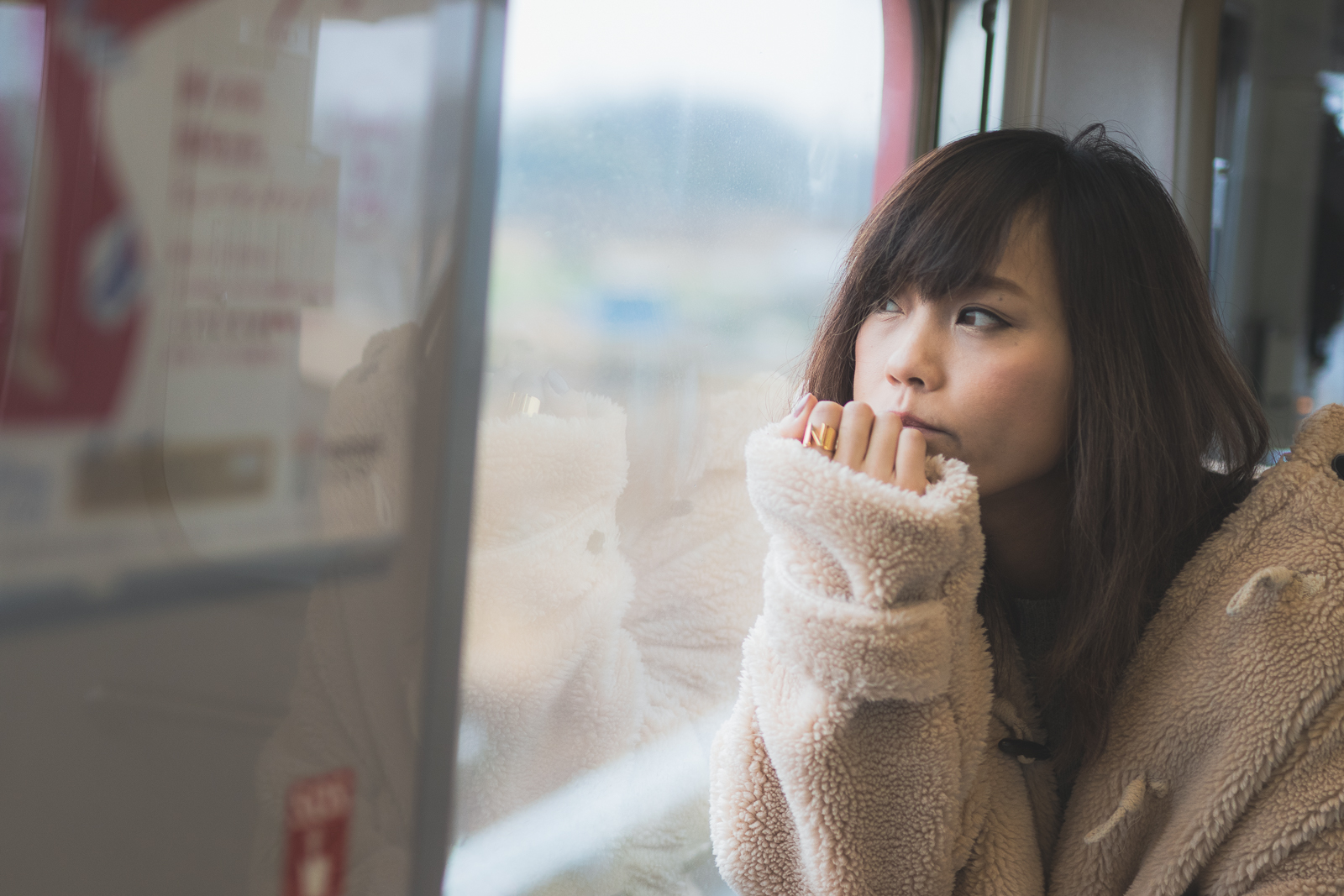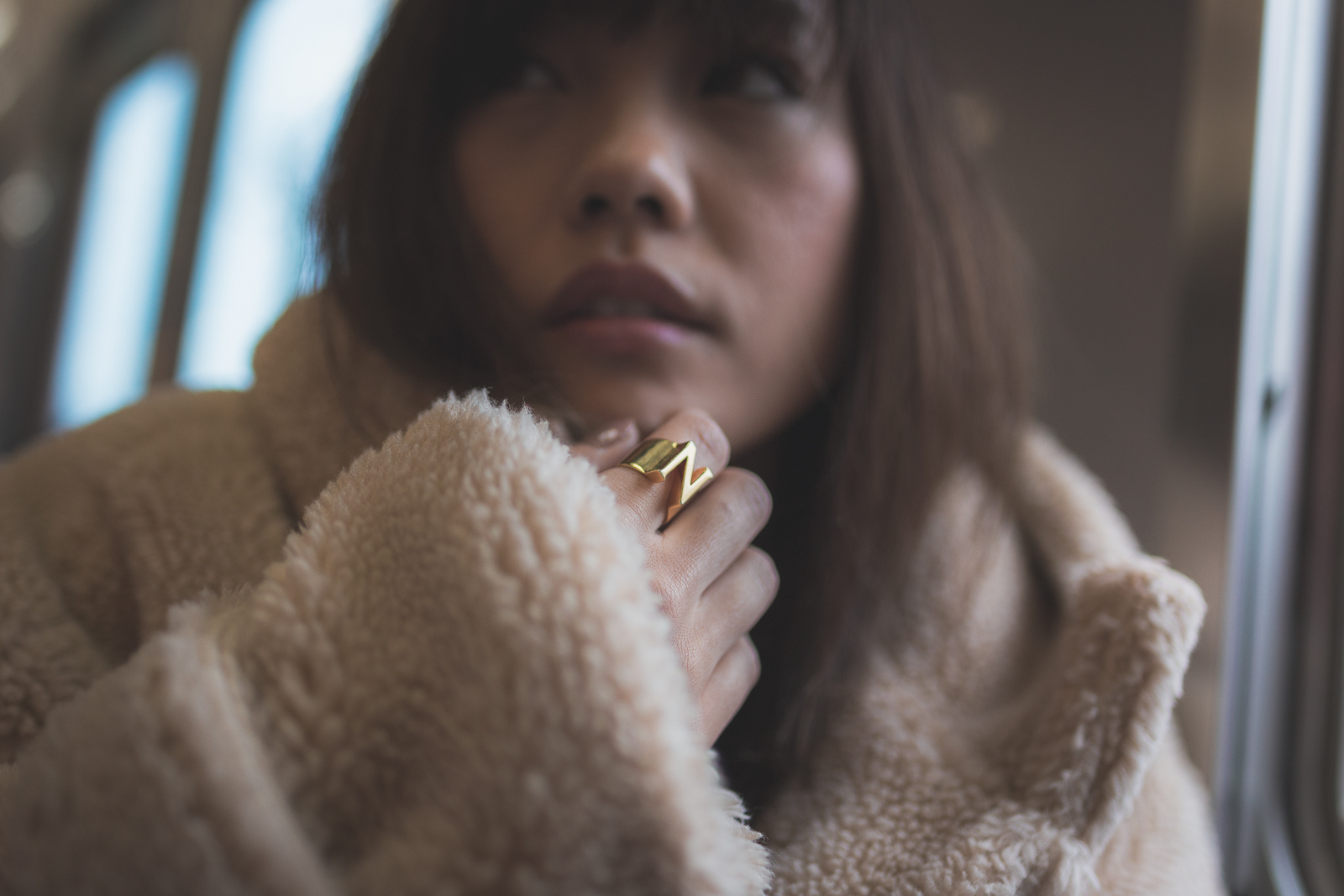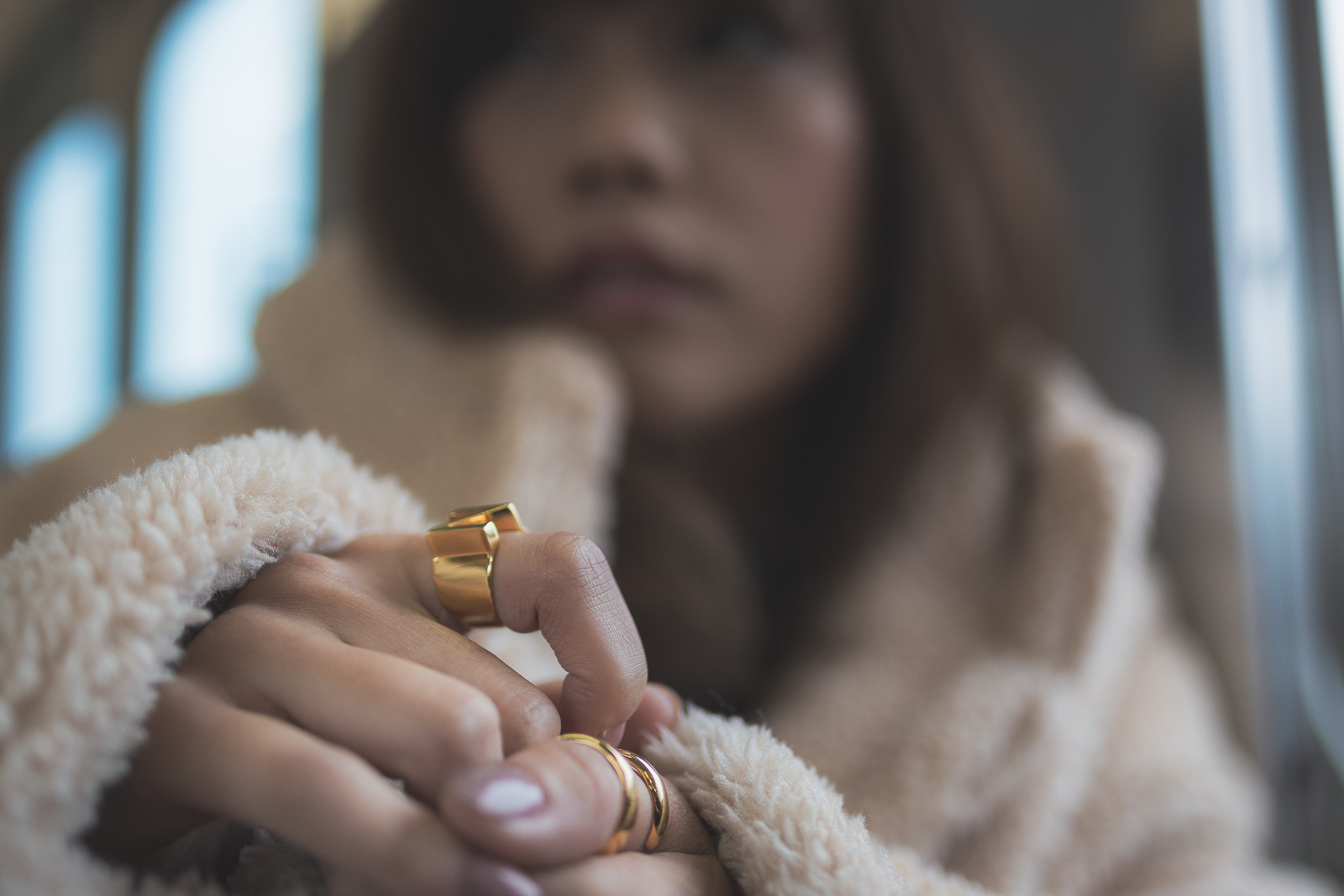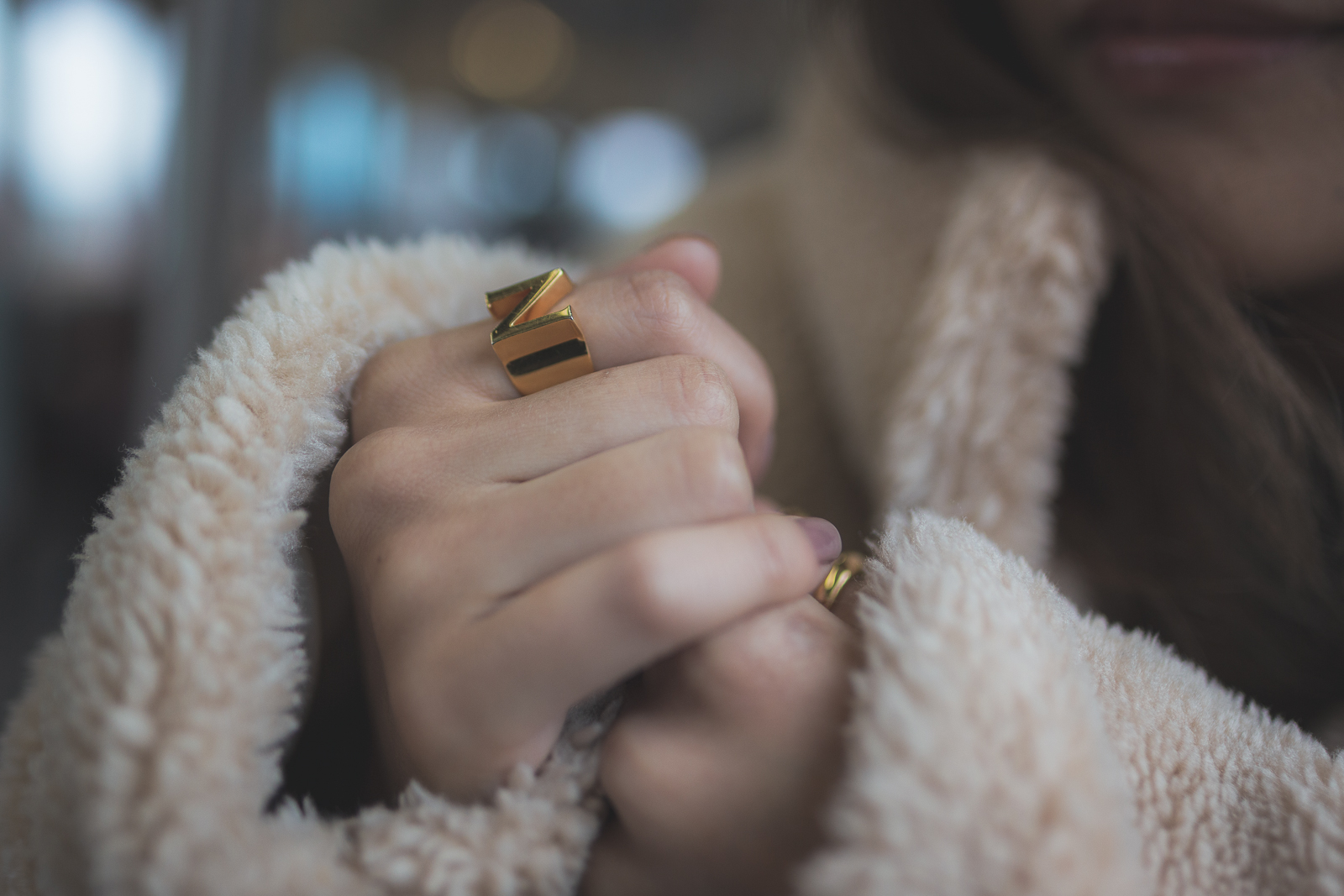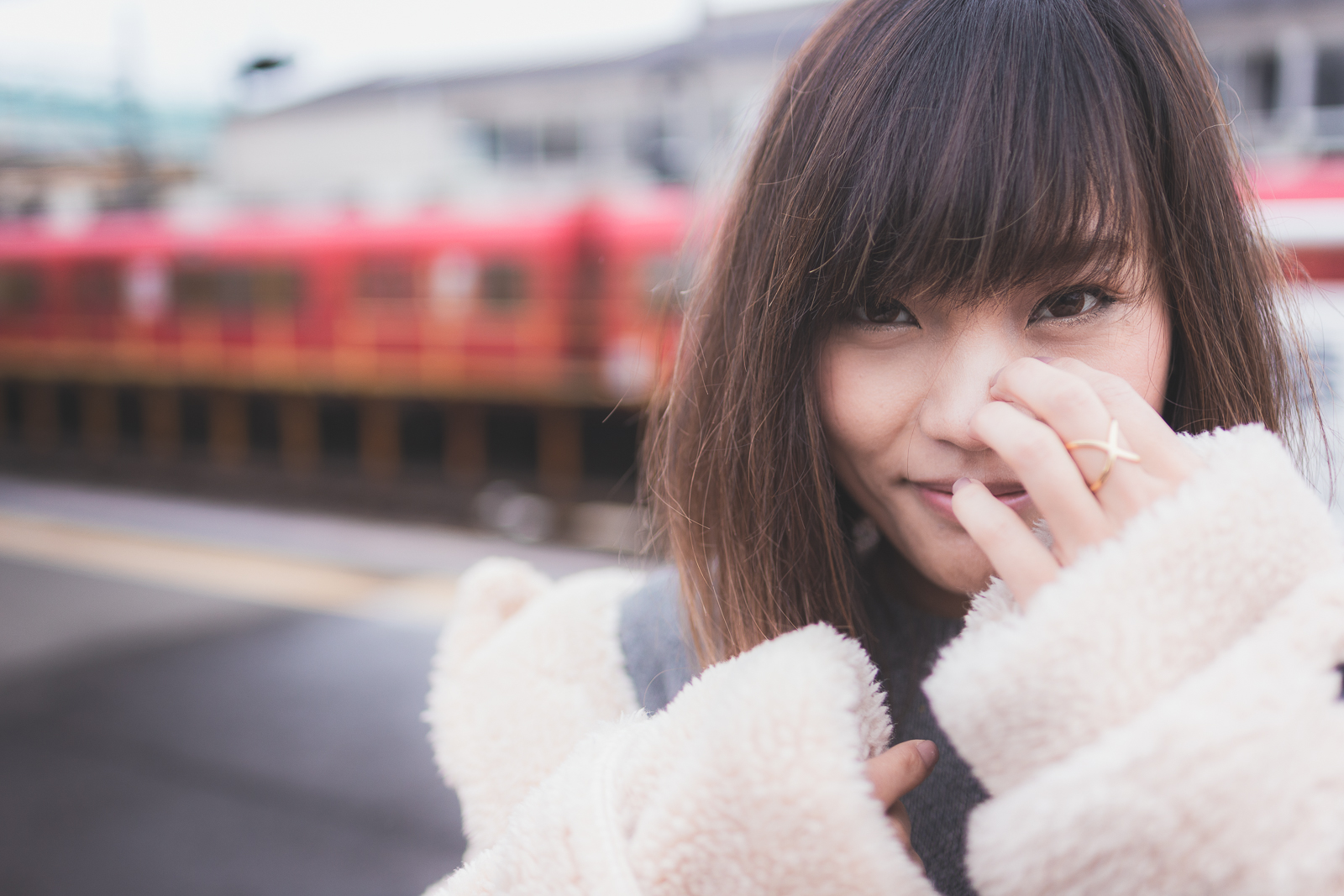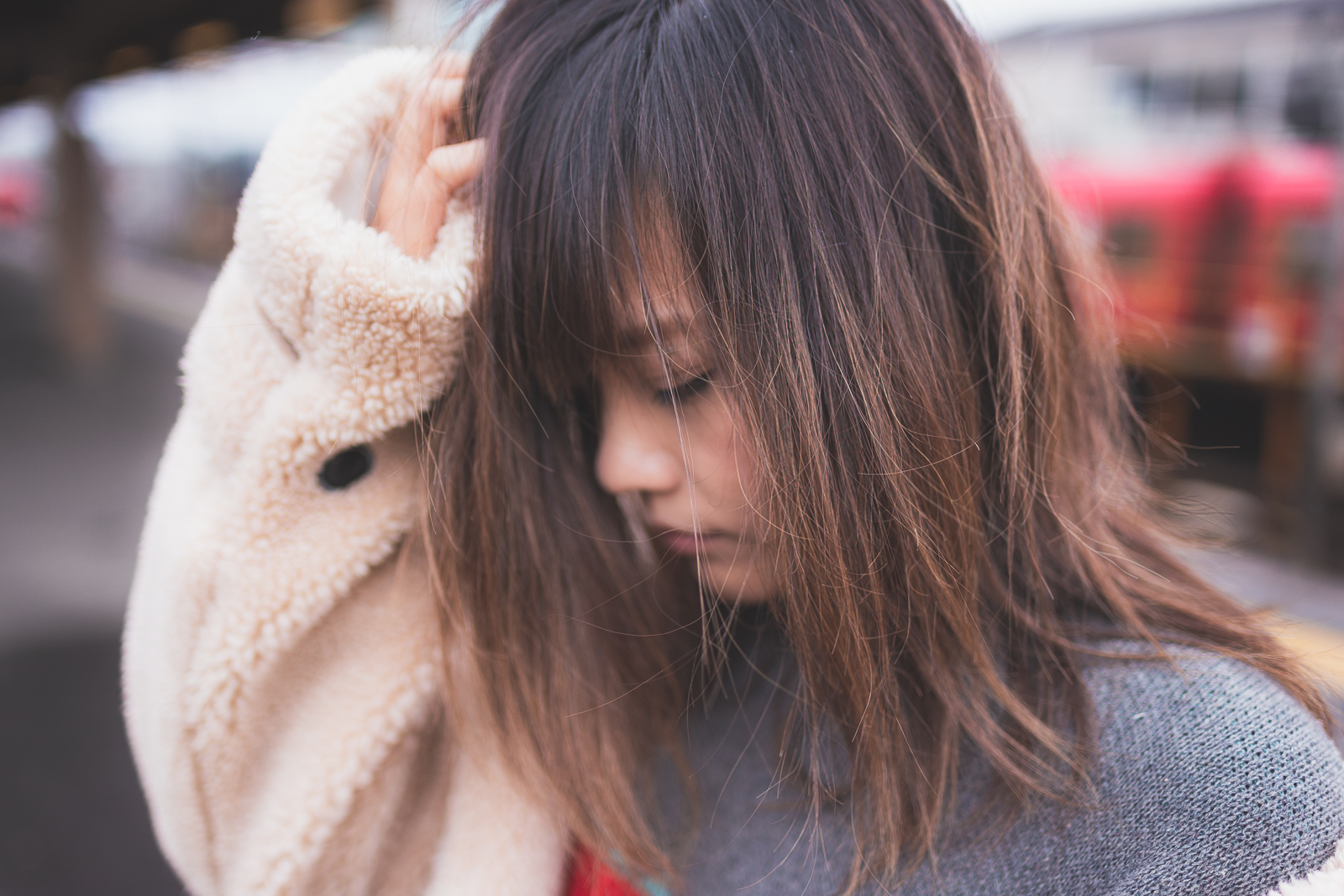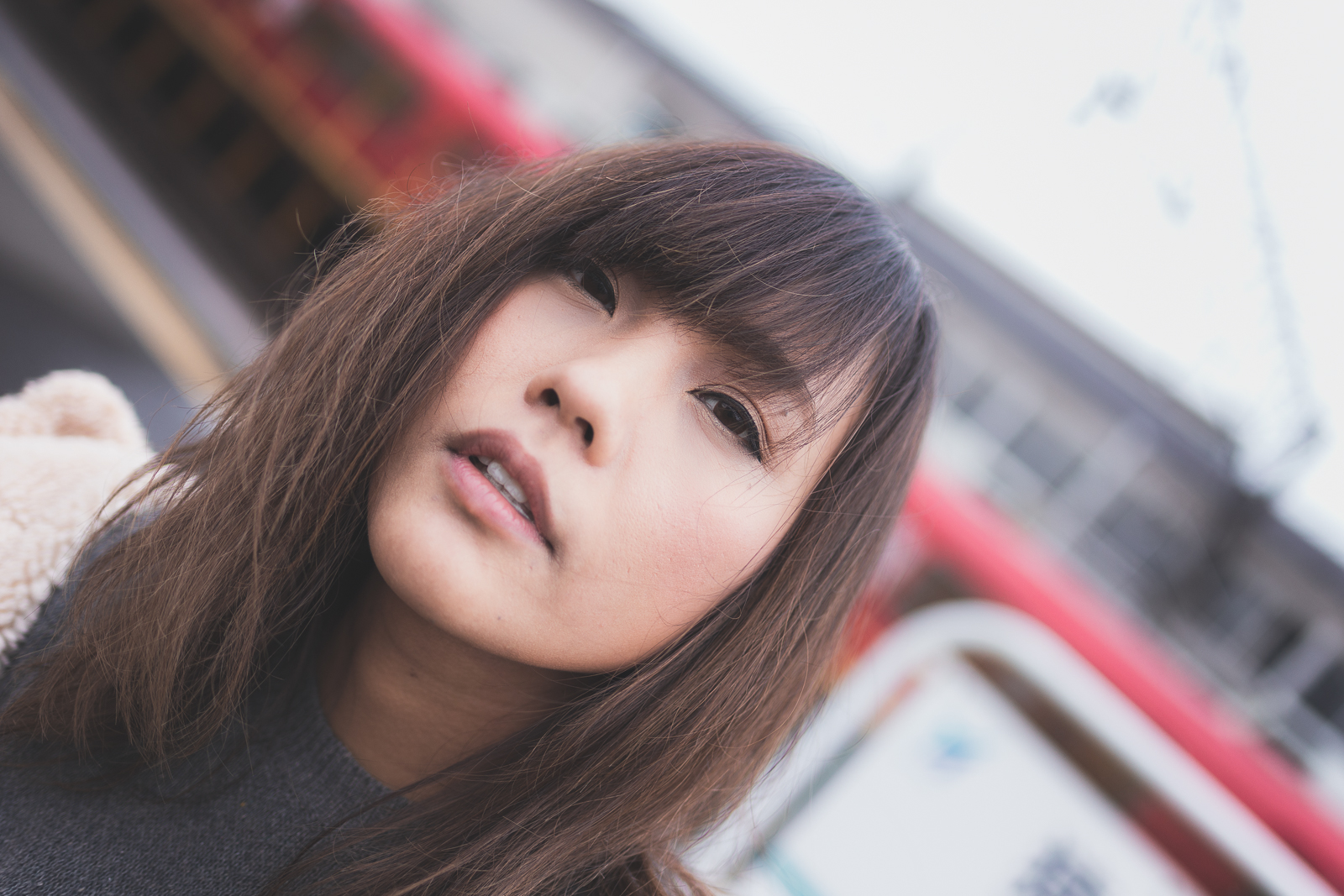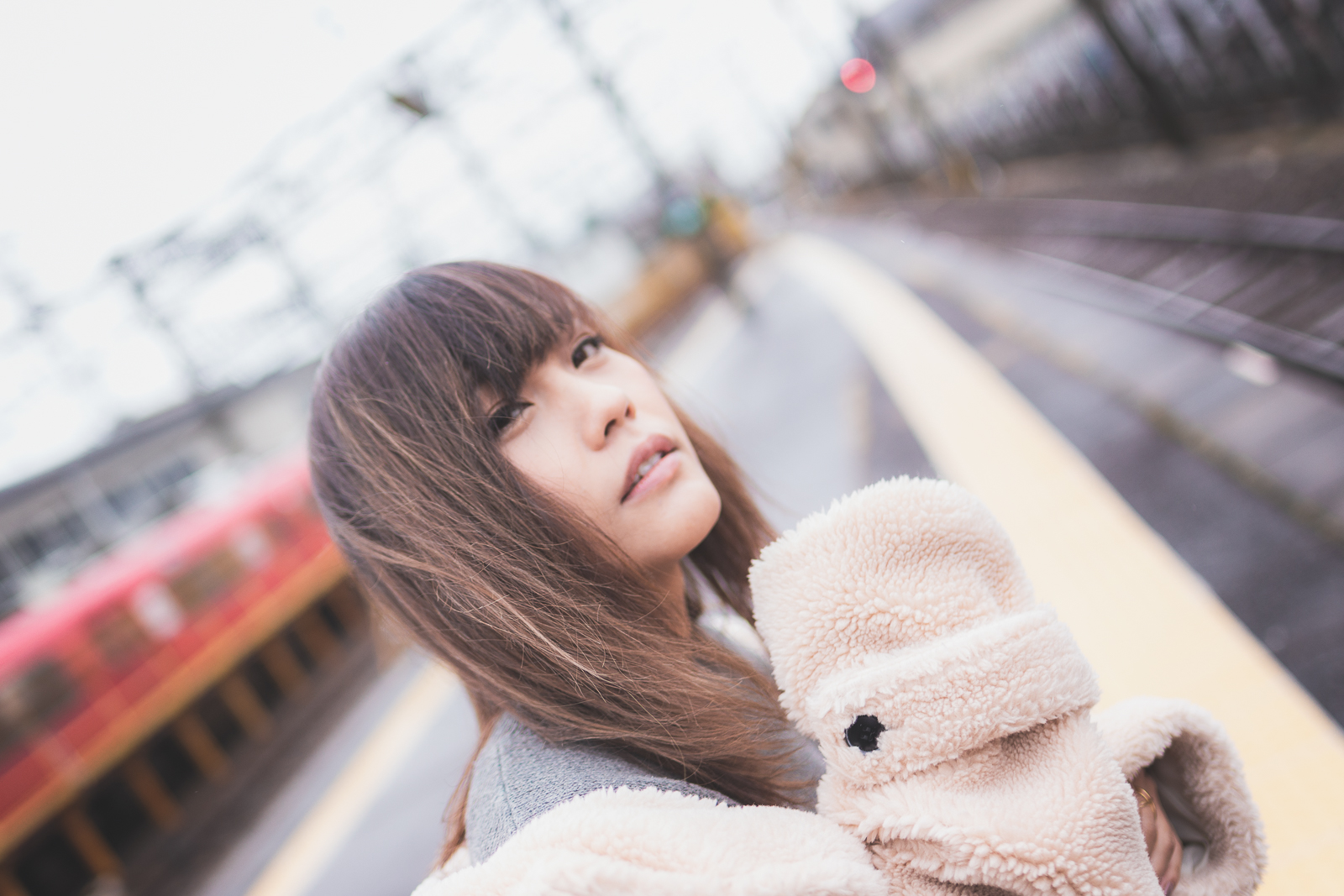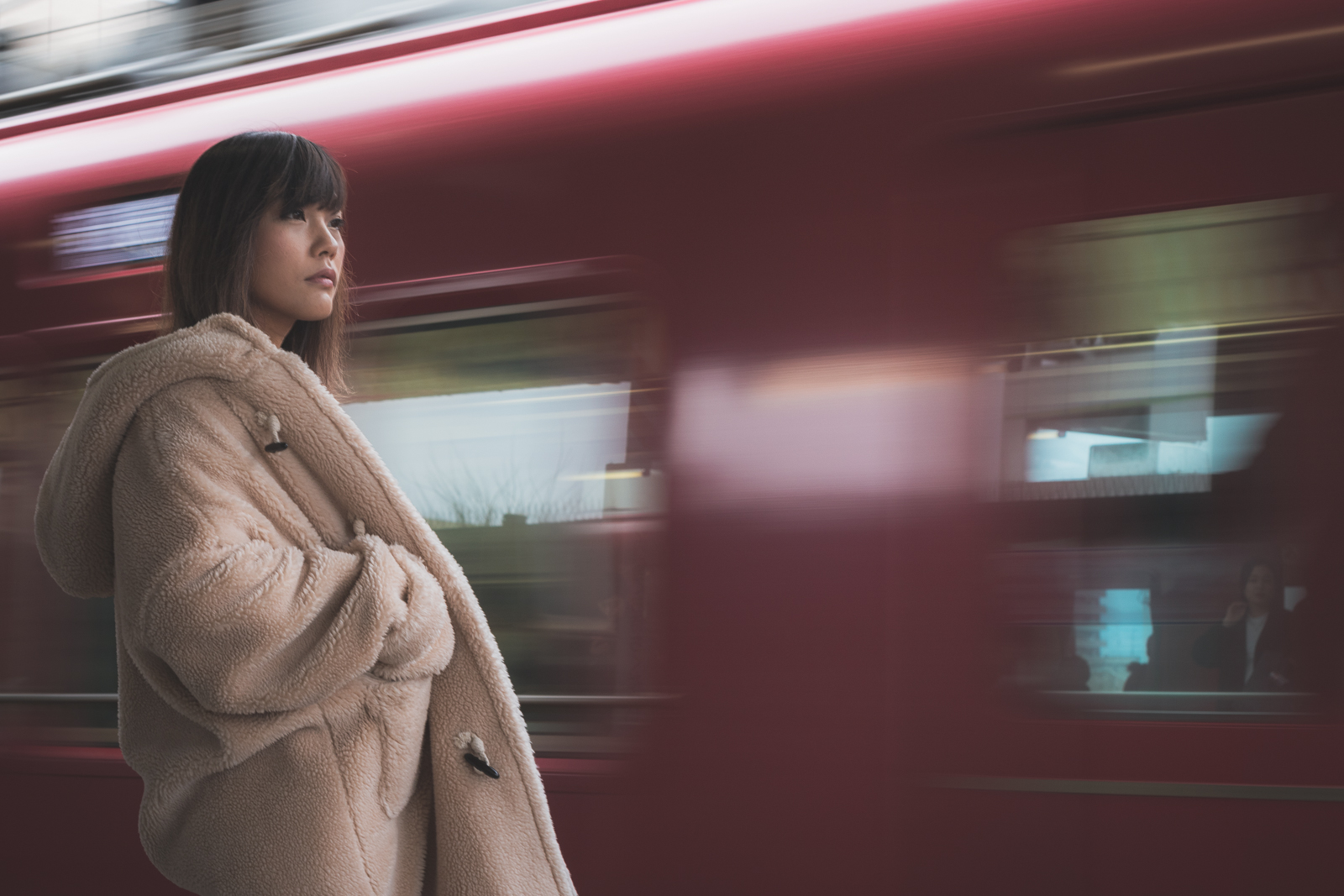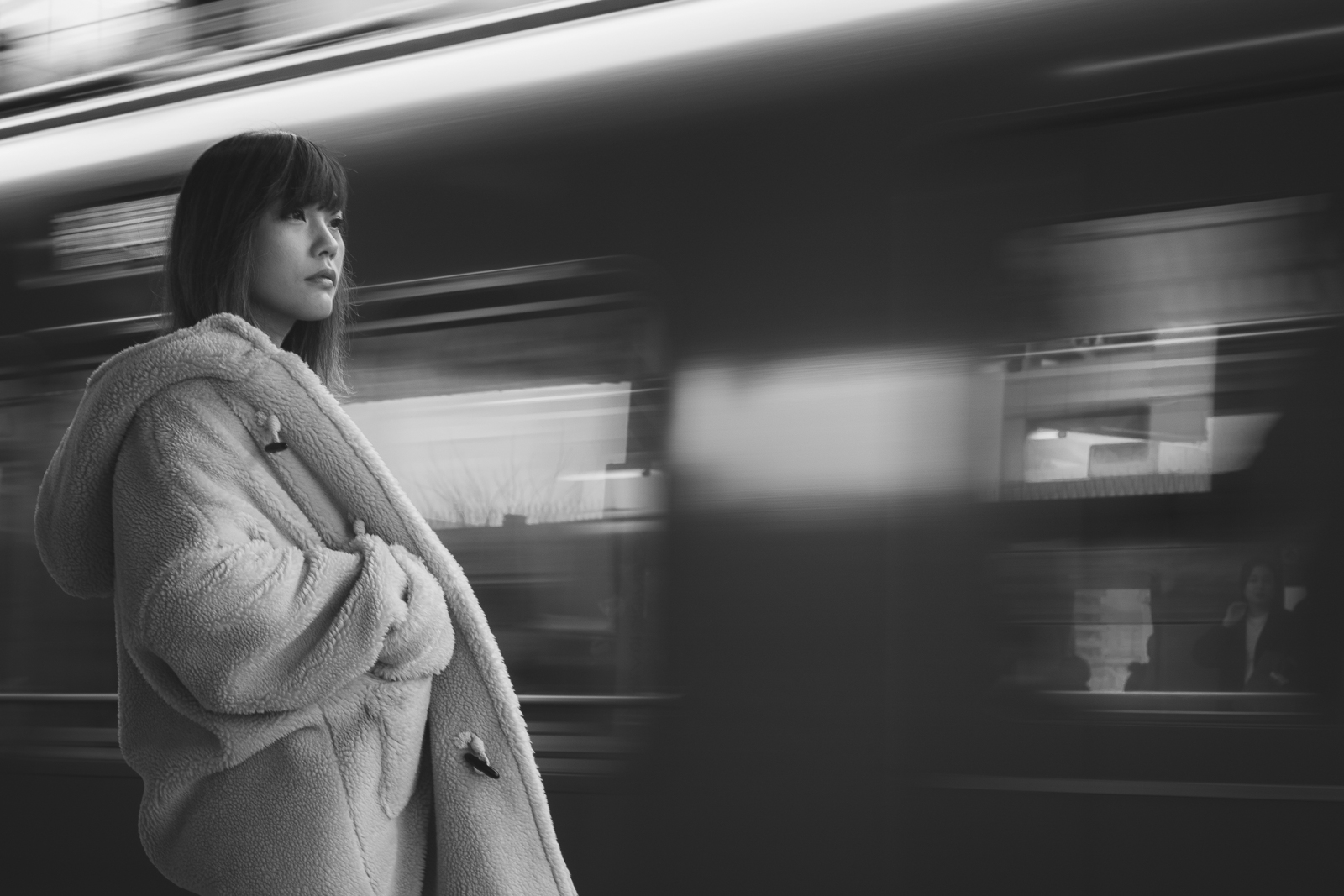When I decided to start doing portrait photography seriously a couple years back, I didn't have a clear idea of what portrait photography was, so I went on-line to read tutorials and watch videos about posing, lighting, editing techniques, and the best lenses to use. There was an overload of information with titles like, Five Important Camera Settings for Portrait Photos, 10 Portrait Styles with One Light, and 15 Portrait Photography Techniques that All Pros Use. I have since learned to avoid articles that include lists in their titles, but at the time, I avidly took down notes on poses, camera settings, and various do's and don'ts. I looked for models on Instagram who live in the Nagoya Area, and offered to do sessions TFP (time for print) to get experience and build up my website. After about a year of practicing, with several different models, I discovered Nina on Instagram last Spring. Nina is a half Japanese/half Filippino mother of two boys with big, alluring eyes and a dramatic look. We decided to meet at Heiwa Park for a shoot with the cherry blossoms. By that time, I had gotten used to working with various lighting scenarios. We met in the afternoon, when the sun was still bright, so I used backlighting and looked for open shade. Nina is a natural in front of the camera who doesn't require posing instruction, and I think her charm came through in the photos.
Since that spring shoot, I have had the opportunity to do three more photo shoots with Nina, and as noted in my last blog post about photographing Mitsuki and her family over time, it has given me a chance to see if and how my style has evolved. Technically, I think I'm not doing much different. I still like to shoot with natural light (as carrying around lighting equipment is a hassle) and I like to use a wide aperture (to add background blur.) I have made minor tweaks to my editing style, but nothing too dramatic. So, perhaps the biggest change is that I put more effort into choosing locations now. My goal is no longer to simply show the subject in an attractive light, but to create a scene around them, like a frame taken from a movie. I want the viewer to imagine a scenario, and to wonder what happens next. So, for my most recent portrait session with Nina, I knew ahead of time where I wanted to shoot. I've always had a thing about trains and train platforms, and wanted to create a scenario where a woman is standing on a platform with a train waiting behind her, preferably red. I'd seen this cool, older model red train in circulation around the Nagoya area, so I looked for it on-line and discovered it was the Meitetsu 6000. Then, I looked up train lines where 6000 series trains are in service. There were some train lines where the 6000 series trains came occasionally, but trying to figure out the train schedules in Japanese, and then working a photo shoot around those times was too daunting, so I was happy to find a station where ALL the trains were of the 6000 series type. It was the Mikawa Line that runs through Toyota City, starting at Sanage Station. So, that's where we went.
https://en.wikipedia.org/wiki/Meitetsu_Mikawa_Line
We started at Umetsubo Station, as there is a big parking area near the station. The trains on the Mikawa line leave roughly every 15 minutes, so while waiting for the next departure, we started off with some shots on the platform, with the red trains in the background.
Then, we got on the train and rode it three stops to Sanage Station. I was surprised to discover that, on the inside, the 6000 trains looked pretty much like any other trains, and didn't have the old, classy look I was expecting. So, I tried for angles that made it clear that we were on a train, without focusing on the train itself.
For a variation, I experimented with including the standing passenger handles in the photo in different ways.
As Sanage is the terminal station, the trains stop, the passengers get off, and then they head back in the opposite direction after a ten minute wait. This gave us time to try some scenarios, like getting on and off the train.
We also tried taking photos through windows and incorporating reflections.
We ended up making the fourteen minute roundtrip between Sanage and Umetsubo Station twice, and on our last ride back to Umetsubo, I had Nina sit facing out the window to catch the soft, flattering light from the overcast day.
Nina was wearing interesting rings, including "N" for Nina, so I took a few photos of her hands.
Back at Umetsubo Station, I took some tighter headshots, walking around Nina with my camera to take in different backgrounds. Because it was an overcast day, the ambient light was soft and unidirectional, which made lighting really easy.
Just as we were packing up to go, I saw the next train approaching and decided to try using a slow shutter, with Nina holding still so the train would look like a blur in the background, but she would remain sharp. I didn't have time to dial in my settings, and my shutter was a bit too slow, so four out of the five shots I managed to fire off were blurry, but this one photo made it worth the effort.
Portrait shoots come in many shapes and sizes, from studio portraits using multiple light sources and a neutral backdrop to "natural light" portraits on the beach. The importance of location depends on the purpose of the shoot. For business and professional shoots, the background is largely irrelevant. The focus is the subject, and showing them in an attractive light, ideally with a “real” expression. For this sort of portrait, I don't feel like I have anything unique to bring to the table. I don't have the best equipment, I'm not a lighting expert, and I know nothing about makeup and styling. So, little by little I have gravitated towards portrait sessions that make use of a location. I want to capture real expressions in my subjects, but also to add something of my own vision to the process. I'm not sure whether these sorts of portraits have much real-world application, but hopefully they say something to the viewer, and make them want to see the rest of the movie.
To see more of Nina’s photos, check out her Instagram:

